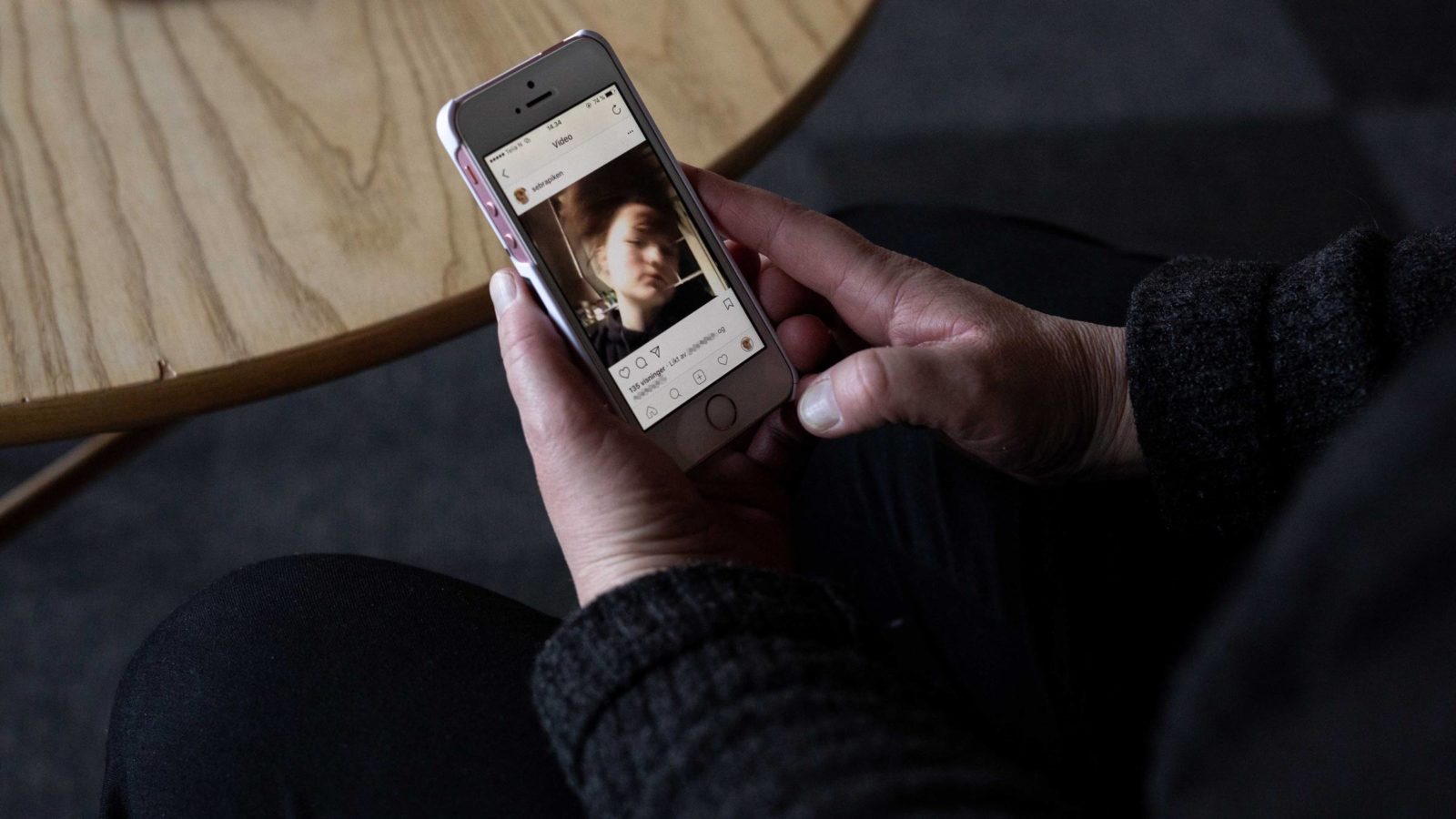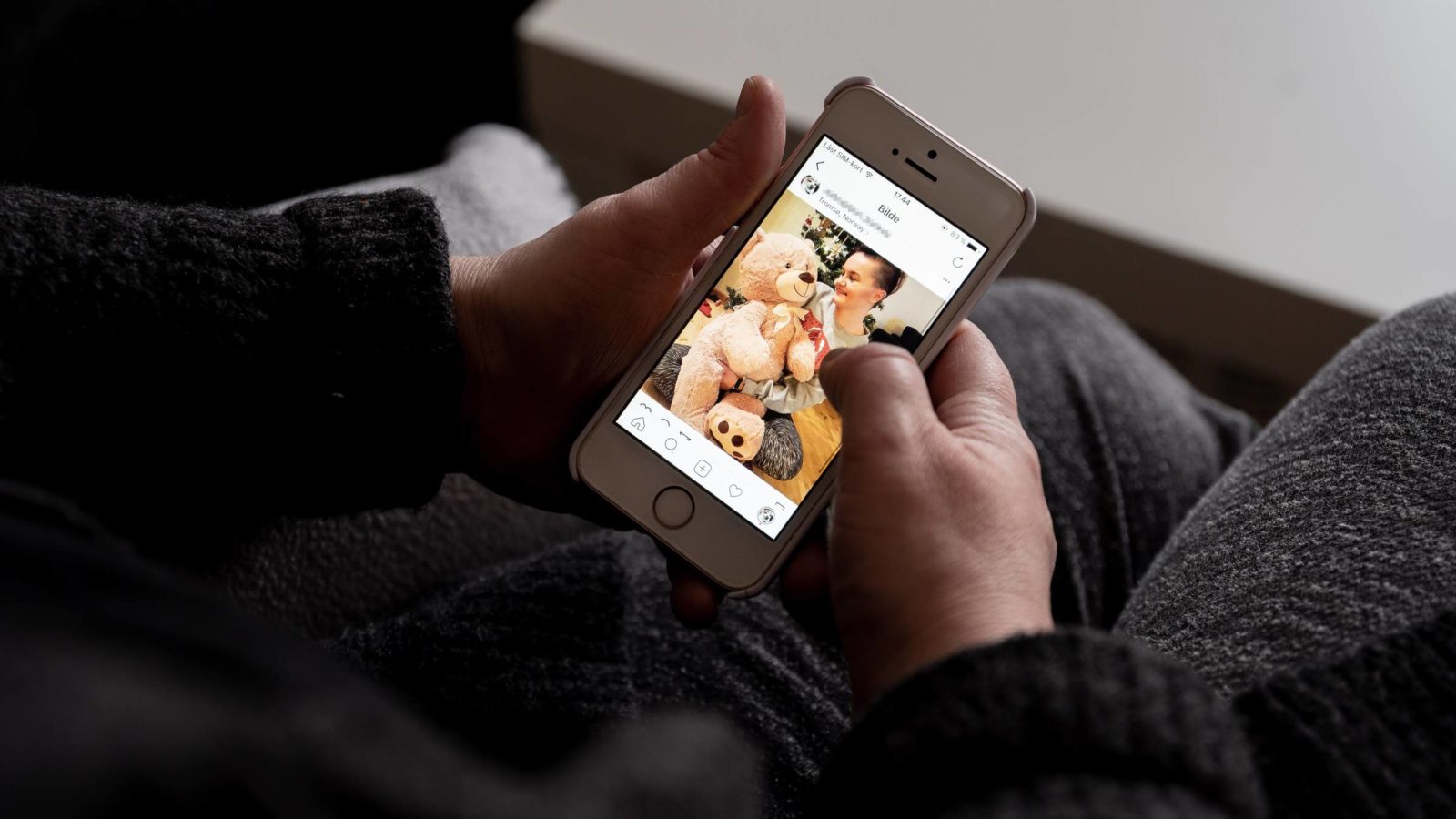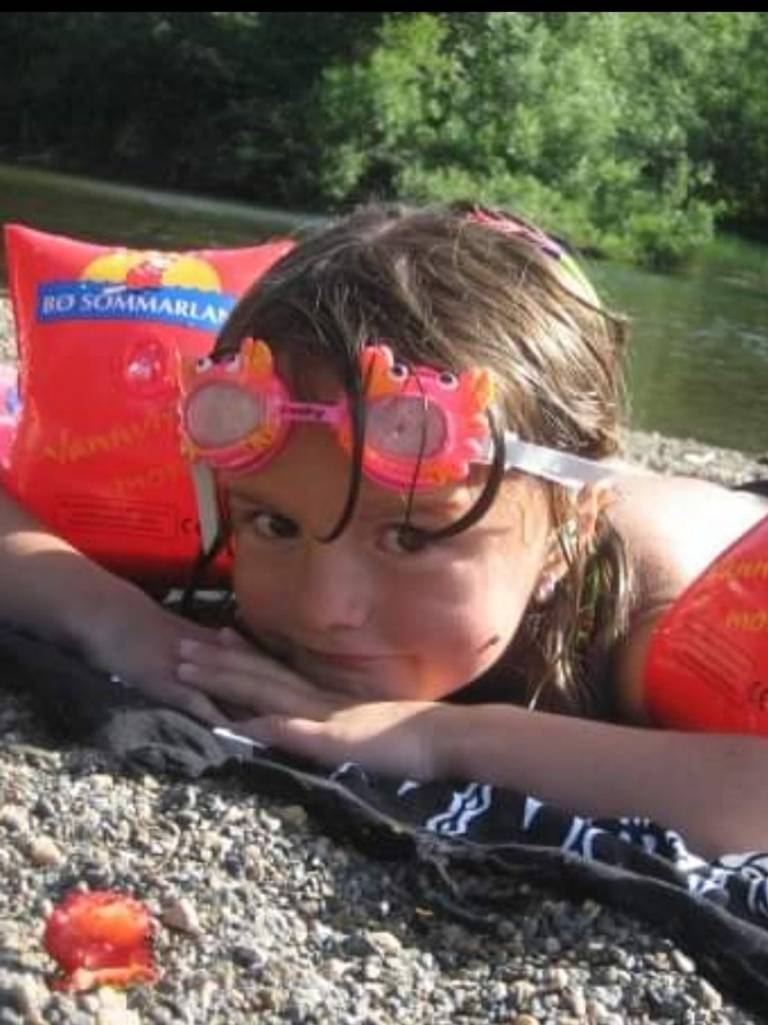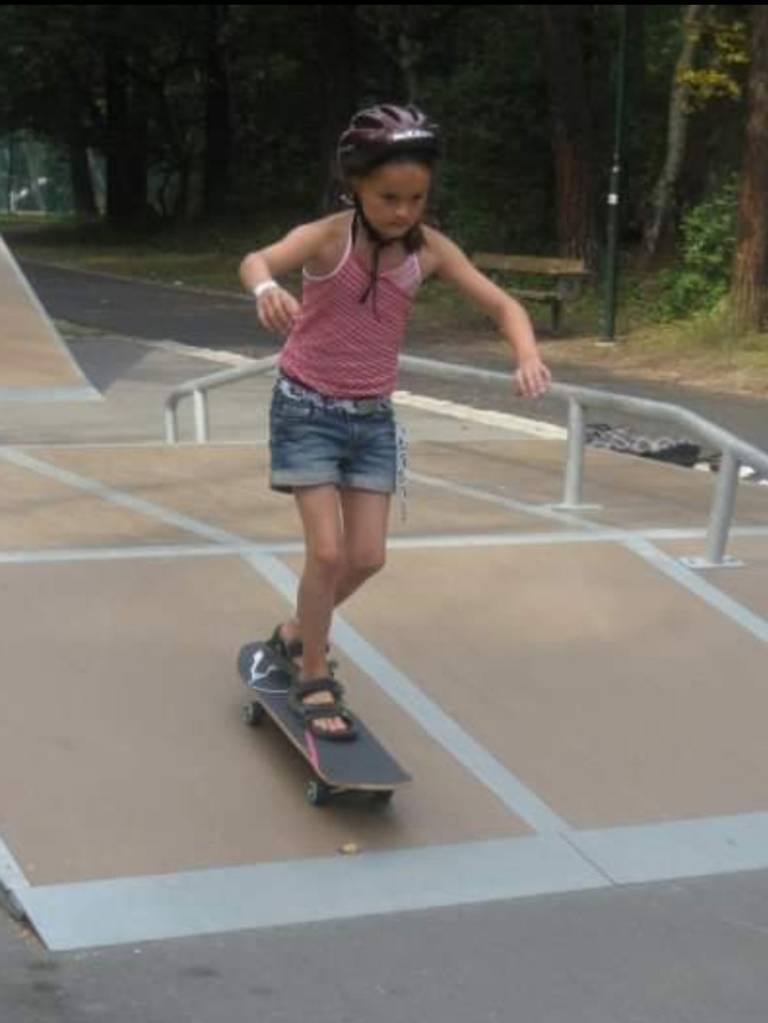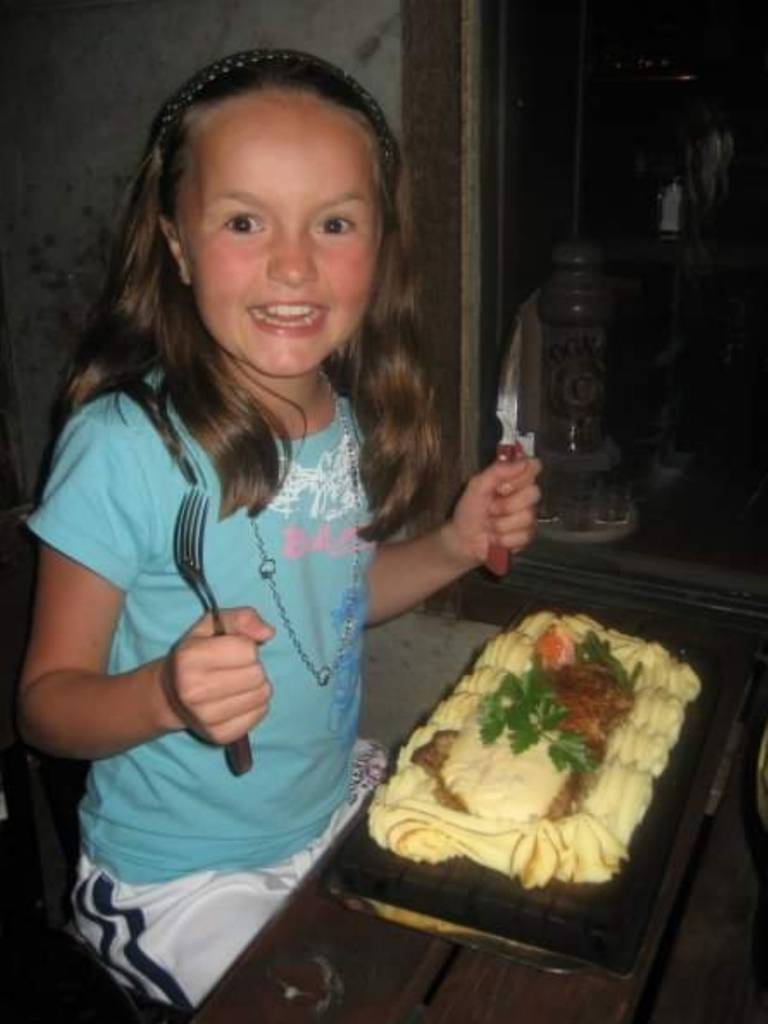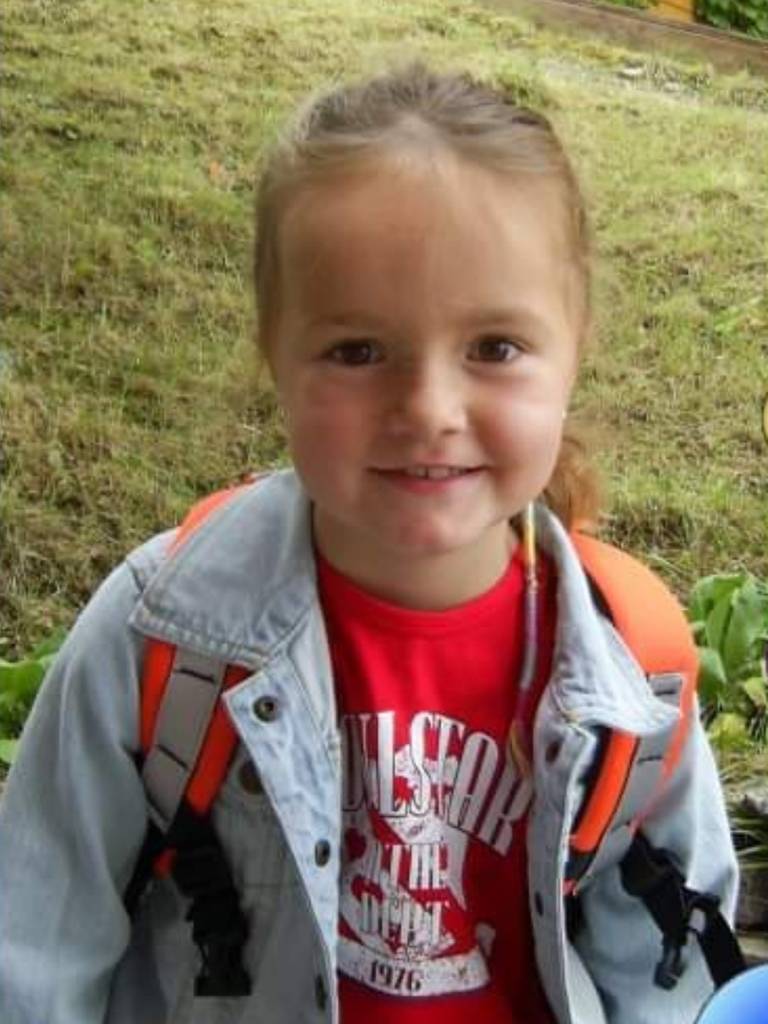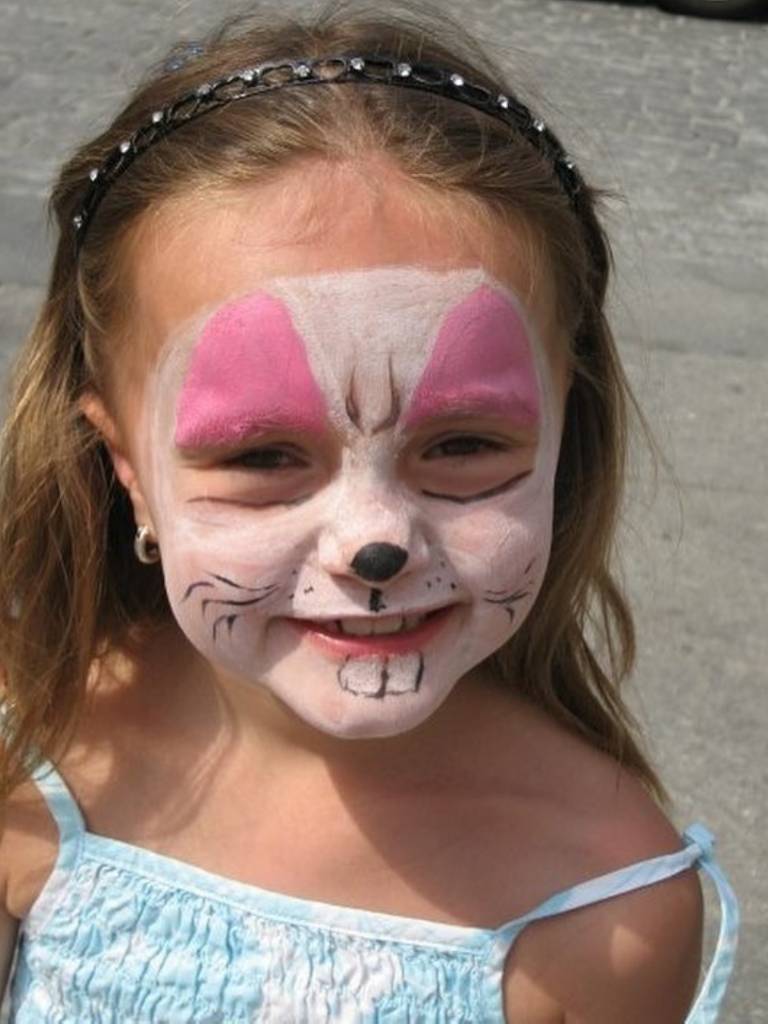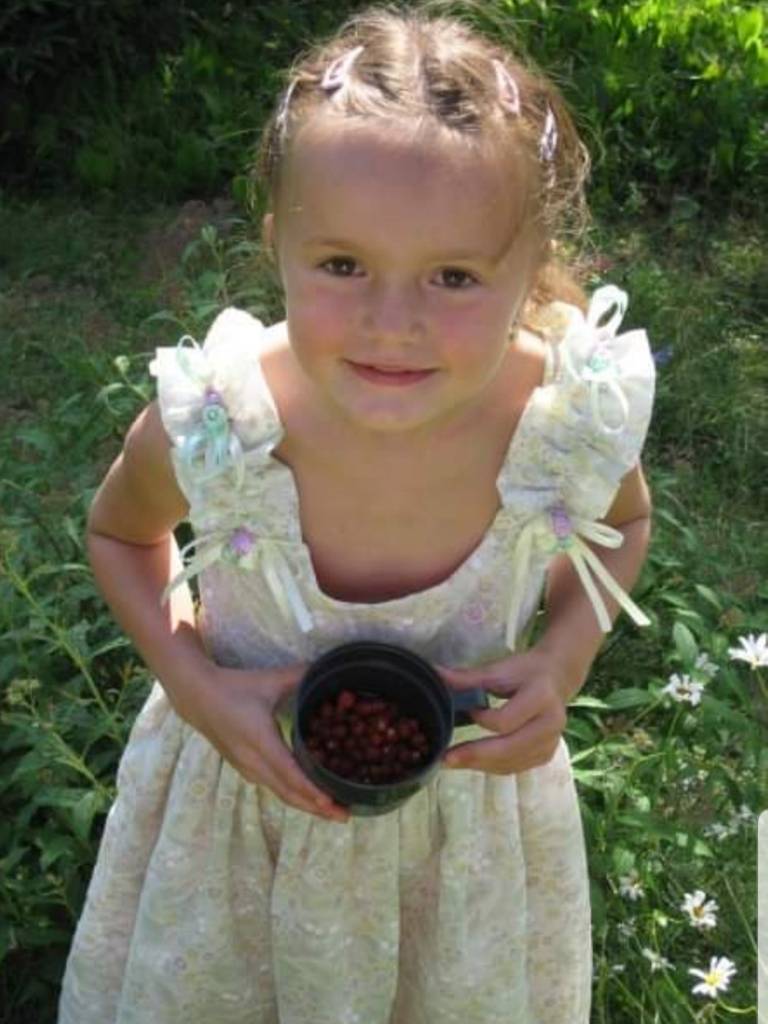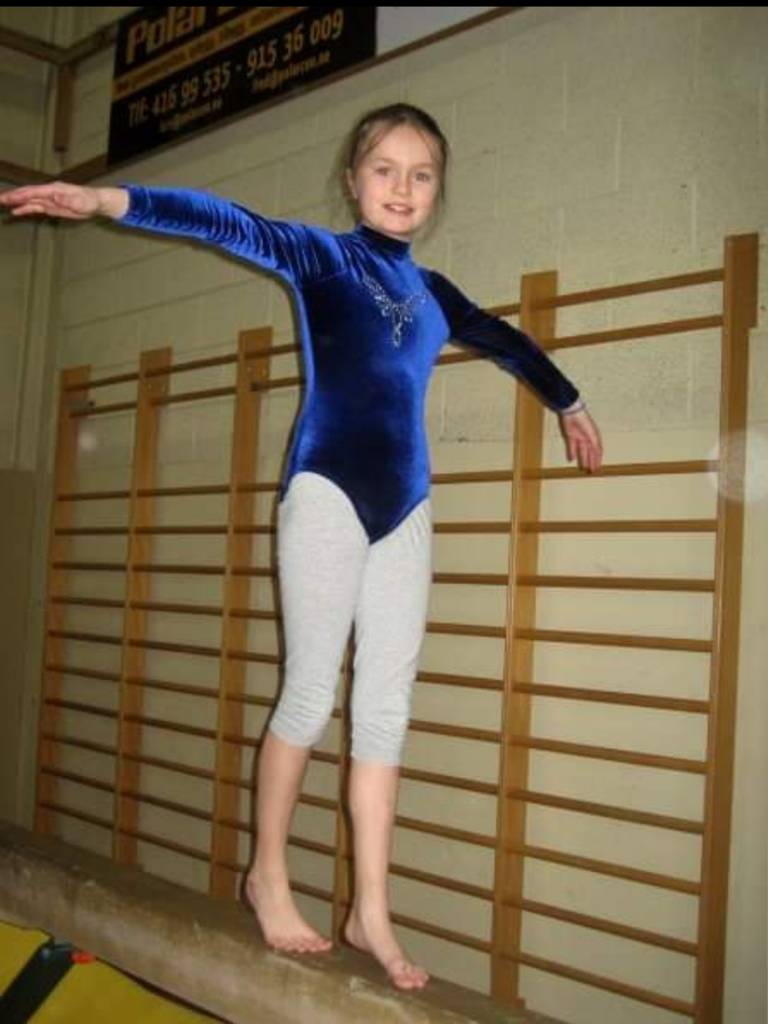How We Stopped Being Comrades
Freedom is not a birthright. No generation receives freedom ready-made and perfect: pre-prepared for consumption.
It was November 1989 and I was trying to breathe in, together with the sharp air, a new experience: freedom. We were testing ourselves in new roles, unknown to us until then. In courageous, provocative, loud, affectionate and inspiring roles. Above all, in free roles. Instead of applauding as we gathered at squares, we jangled our keys.
We told ourselves that the revolution had taken us by the hand and led us out from Plato’s famous cave and we were able to perceive contours, forms and colours, not just shadows on the wall. But were all of us really able to suddenly see much more clearly?
We were beginners in freedom.
We were learning how to name things again. A public march was no longer an indifferent affair with artificial carnations and red banners with printed pictures of long-bearded fathers of communist ideology. It was a protest from which no one tried to escape at the nearest corner after waving at the party secretariat and the generals on the grandstand.
Calling each other comrade lost its value overnight, in the morning we were all citizens. We were trying to grasp the difference between the freedom of that November from the ‘un-freedom’ in which we had grown up. We were inundated by new definitions, it felt like rain after a drought. The earth was absorbing it, but we did not know what would grow in our gardens in the end.
Communists and Certainties
A lot of people who lived most of their adult lives under communism were afraid. They were scared of losing their certainties – certainties to which the communist regime had condemned several generations.
They had nothing else, except these certainties: the certainty of being allocated a flat in a high-rise prefabricated block in a housing estate, the certainty of a job for life, of oranges in shops before Christmas, and the certainty of one party rule. The certainty of May Day celebrations, of chanting “with the USSR, forever,” things that would never change. The certainty of what had to be called “fraternal military help” and two state channels on their black-and-white TV’s. The certainty that everyone else was eating the very same lunch in canteens and that all that was required was “to keep your mouth shut and toe the line.”
Even today, after thirty years, some people ask: “what was so bad about it?” They don’t remember all the compromises and the humiliations that these certainties brought to a part of the nation.
Or there was the certainty of fear and of informers, of hard manual labour for those who criticised the regime, or even being sent to the uranium mines in Jáchymov. The certainty of the ‘baksheesh,’ of the gifts and the bribes, of the black socialist limousines, Tatras and Zils – exclusively for the apparatchiks – of lavatories with no toilet paper, and most of us without a passport, some maybe got a travel permit to Romania.
“We thank you, mother party, for the warmth and the glow, we promise to give you support with all our heart.”
“Away with the communists,” we shouted then. Most likely we did not have in mind all the members of the communist party whom we knew personally: our neighbours, teachers, relatives, and the celebrities of socialism. Where would they go? We believed that communism would run off people like sweat after a purifying fever. Thirty years later we are finding out that for some it will never run off. As a child I never actually knew what a communist was, even though the whole educational system worked to engrain in us from early childhood that they were the good ones. But they did not fit into the traditional fairy tales our granny told, in which good and evil were easily discernible.
We believed that communism would run off people like sweat after a purifying fever. Thirty years later we are finding out that for some it will never run off.
God and Terézia
Terézia, my great-aunt from Gemerska Panica, swore at the communists her whole life. A hunched, devout woman, she would fly into a rage at the mere mention of the regime, lifting her bent head and unleashing a torrent of abuse: büdös komunisták (stinky communists).
Even those who had confiscated cows and horses for the nationalized agricultural co-op were scared of her. They couldn’t get to her. They couldn’t sack her, because she was not employed, and they couldn’t punish her children, because she didn’t have any. They couldn’t take any certainties away from her, because she only had one certainty: she would die and her sufferings on this earth would end.
She was sometimes warned not to swear in front of the children, as they could repeat what she said at school and their parents would get into trouble. “God will punish them all, the teachers included; why would they punish the children?” she would say.
We knew her stories, we knew that she refused to hand over her cows to the co-op or to sign any documents brought to her by the chairman of the local party. The comrades in the villages changed, but Terézia remained their steadfast “opposition.” She told one of them that if he ever crossed the threshold of her house, she would be coming to his office and cursing him until his drunkard’s nose fell off. He never crossed it.
She went proudly to church, as long as she was able. Later, she complained that even the church was not the same and that the priest could not speak her language anymore. She wasn’t a revolutionary, but never forgave the regime for wanting to take God away from her.
Kádár, Hofi and Samizdat
We were taught from early childhood to distinguish between what we could and could not say at school. For instance, I wasn’t supposed to repeat what my grandfather from the Hungarian city of Miskolc used to say about the regime after several glasses of wine: that in Hungary the regime would collapse and then we were going to move there.
Béla Balog used to quote the jokes of the Hungarian slapstick comedian, Géza Hofi, about János Kádár’s regime, which made even stupid, pot-bellied comrades laugh in the intimacy of their sitting room. We did not know at that time that cabaret and criticism of the political malaise was tolerated in Hungary as a vent for built-up pressure, in as far as it did not touch the substance. That provided an illusion of freedom, a laugh at the expense of local party secretaries, the permitted caricatures of those times.
Grandfather used to bring us books that we could not get hold of in Slovakia and after classes a teacher at my grammar school told me about samizdat – banned books – what Beszélő (the underground opposition magazine) was and who Imre Nagy (the Prime Minister and leader of the 1956 Hungarian revolution, who was later executed) was. I learned that people were not burned in a public square for speaking the truth anymore, instead they were slapped in the face.
The Revolutionaries
I came to Bratislava in 1989. After two months we stopped attending university. We were not playing truant. We were revolutionaries. Our parents, if not marching with us, were at home listening to radios in the hope that the tanks would not arrive, in the same way they had not arrived in Hungary and in Poland as their regimes started to fold.
Some of our teachers took off their blazers, put on old jumpers and marched with us. Even at the time we had a feeling that it was not possible to take Marxism-Leninism off like a comrade’s tie. In the first few days of the revolution, older students started to ask what was going to happen to the professors who taught Critiques of Bourgeois Media and Literature, Critiques of Revisionism of the Revolutionary Movement, Marxism-Leninism, and Dialectical and Historical Materialism. Who would decide who would carry on teaching at the Departments of Philosophy, Journalism and History?
It was meant to be a velvet revolution and so we hoped that these decisions would be made not by self-declared student courts, but by individuals’ consciences. Of course, we had no idea at the time that some people would undergo a quick learning course in erasing any ideological achievements they collected before the revolution from their CVs. Time would show how authentic the metamorphosis of the teaching “elite” really was.
Freedom is not an birthright and it will not automatically seep into the genetic code of the nation.
Freedom
Everything around us gained speed. After years of stagnant waters, freedom was flowing from universities, theatres and public squares into the streets. It poured into the socialist apartments, cellars and pubs where people, after a few beers, bravely panned the regime. There was no way of stopping it. It became a powerful river, carrying us along.
We knew that it was not right to be just carried along. We knew that there were many years of work ahead of us. We felt that our generation, teenagers, had been saved, together with the generations that were to follow.
But freedom is not a birthright and it will not automatically seep into the genetic code of the nation. No generation receives her ready-made: prepared for instant consumption. If we no longer take care of her, she will be kidnapped by individuals corrupted by power.
Without Comrades, But With Party Members
Lots of people consumed democracy as if it were a giant food orgy. They put indigestible combinations on their plates. They ate only because at that moment the tables were full and they happened to be there first. They did not think about the people who were still lining up, the generations yet to come, parents hoping that their children would inherit democracy.
Communist comrades became party members and the post-revolution generation of party apparatchiks was born. They inherited loyalty to their party. If their loyalty was sufficiently strong, even if they had failed as human beings, the party took care of them and secured their preferential access to the table.
The first of these were privatisers under Vladimír Mečiar. Without a vision, but with gilded toilets, a collection of luxury cars with the price tag that would cover education for many generations of Roma children, a bevy of beautiful women without wrinkles, and bribed officials without inhibitions.
For a while, some managed to maintain the image of being a democrat, for the sake of the voter. But in the end, they could not resist the temptations offered by the state table. The public sector was left to the crumbs from the state budget and pensioners were sent 50 euros before Christmas to make them feel that the state cares. Others got leaflets about enemies of the nation, and nationalism for the frustrated poor in the ‘valleys of hunger,’ where economic clans squeezed the last drops out of state funds.
Unlike under communism, party membership was no longer necessary for a successful career beyond being a welder in a factory or a school teacher. But a party connection brought significant economic advantages, positions in public administration and the promise of ‘protection’ if you were caught implementing the darker side of party doctrine.
Protection
Robert Fico’s Smer party has upgraded the idea of what it means to be a political clan. The party became a family in the same way the concept is understood by the mafia: absolute loyalty, denial of responsibility, protection and career advancement. Officials who were grateful to the party for their jobs (or perhaps their boss was) kept lists in their heads of people who were to be served and were untouchable. These same lists were known, and the untouchability of the people in those lists respected, by those who were supposed to investigate and prosecute them for crimes.
The Fico-type party does not expel members because of corruption or abuse of power. But punishment and expulsion is certain for those who criticise the head of their adopted family. If public pressure gets too great, those caught in acts of corruption or abuse of power leave the party so as not to harm it. Then they are quietly given a position at an embassy or some useless department.
They have been gradually undermining the rule of law, so it was only a matter of time before Marian Kočner appeared, feeling safe and operating with the belief that in politics there are only two moral levels: low and lower still. After collecting dirt on the powerful so that he could blackmail them all when necessary, he ordered the murder of a journalist to scare everyone.
Like Spoilt Children
A whole political generation treats freedom as if it is only going to last for one parliamentary term. They do not think about what is going to happen the day after they are no longer in power. Often, most of their energy is invested in ensuring their rule never ends.
They deceive voters when they say that democracy will endure even as they pile their plates high with only the tastiest morsels: privileges without duties, freedom without responsibility, words without consequences. They shout that it is liberals or agents of foreign powers who are interpreting democracy wrongly when they say that the rights of minorities cannot be curbed with impunity because the majority wishes so. This is precisely the substance of Western democracy without adjectives attached to it by autocrats – it protects human rights against the tyranny of the majority if the majority is hijacked by populism.
Decent and honest people are not a threatened minority at the edge of society.
A Populist Puzzle
Today some politicians trying to win our votes promise an unrealistic, distorted and deceitful version of the world – a world in which voters themselves define borders and pick who gets to be first class co-citizens, making everyone else invisible and voiceless. Major national tragedies have often started with voters believing such a society is possible.
Thirty years after the revolution, some people in the Visegrad region nod in approval at dictators who claim that human nature is not compliant with liberal democracy, and democracy therefore needs to be modified. That each nation can modify democracy according to its own needs, even to extremes, based on the government it has chosen.
They create enemies of the nation using well-known stereotypes, resurrected from history with great effort using the help of conspiracy websites, because a frightened voter is more willing to divide human rights into those of “others” and those who are “we, who come first above all.” But there is not one version of human rights for white heterosexual Central European men and another generic one for others.
After thirty years we find ourselves at the border between freedom and ‘un-freedom,’ and those who are hijacking the future assure us that they are only protecting the identity of the nation against enemies, enemies they cooked up using the recipes of successful autocrats.
Hope
But we are not powerless. Decent and honest people are not a threatened minority at the edge of society. Maybe they do not shout as loudly, but they do have a voice.
They raise their children and try to live every day with dignity. Each according to their possibilities. They tell their children to look left and right before crossing the road, to politely greet people they know and say thanks if someone does something for them. They tell them that lying is wrong and that they must study diligently and to achieve something in life. It is highly unlikely they would suggest Marian Kočner as a role model.
They go to work every day. Sometimes they worry they might lose their job, since they know work is the only possible way to feed the family. They heal, teach, clean, grow fruit and vegetables, raise animals, distribute meals, drive, transport passengers or travel. Day after day.
They do not steal or bribe and if we asked if they do, they might object: corruption is not a national instinct or characteristic.
People who understand that education is not a type of shame that needs to be concealed are not a total minority in this country yet. People who read and who teach their children to read. People who expect a politician to do the best for them and not use slogans to appeal to their basest instincts. A person in solidarity with others is not a species threatened by extinction. A decent country is not a requirement of only those who are labelled by the impolite minority as coffee-house intellectuals and do-nothings.
And a lot of people understand that again today, as always, we are fighting for our freedom.
Trigger Warning
Trigger warning: suicide, self-harm, eating disorders
The cubbyhole in which Andrine (17) has hidden herself is so small she must sit on her knees. From her mobile she posts several entries on her secret Instagram account. Hundreds of Norwegian girls on this hidden network can read her messages about her wish to die.
NRK has investigated the dark network on Instagram. Andrine is just one of the girls connected to it. At least fifteen Norwegian girls in this closed group have, within a few years, taken their own life. For a long period, Andrine has been one of the most active users on this site – even into her last hours.
Between her bouts of crying she is hardly aware of the two adults standing outside her cubbyhole. She’d rather concentrate on the network and on getting the courage to send what will be a directly transmitted suicide note she writes in one of her last messages on Instagram:

All is checked. Shit Andrine – it is only to do it. DO IT! Don’t give a shit about the disgusting feeling you have in your stomach that does not mean a thing. Stop hesitating. Hell, nobody cares anyway
Comment: ANDRINE NO!! DON’T DO IT!
Comment: Noooo!!!!
(All censorship of the Instagram-postings has, in this story, been made by NRK)
Warning: these images contain graphic content that some viewers may find disturbing
“At last everything is ready,” she writes. For nearly ten months she’s been living in a private child protection institution. On this day the last brick falls into place.
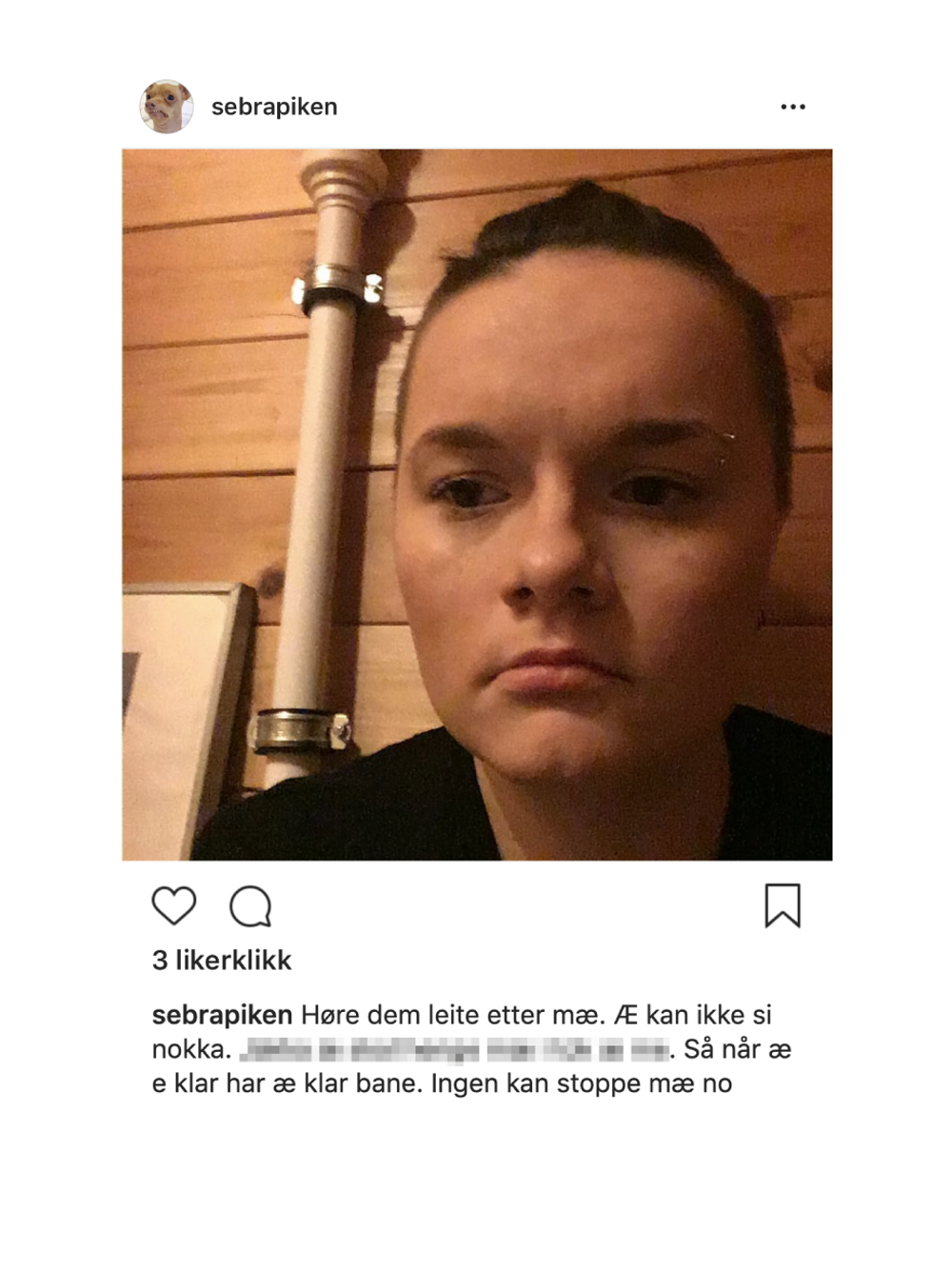
I hear how they look for me. I can’t say anything. (Censured, censured, censured, censured, censured). So when I am ready, I have a clear path. Nobody can stop me now.
Warning: these images contain graphic content that some viewers may find disturbing
She also sends several text messages to the staff on duty this late evening in March 2017. Just before 10.30 pm Andrine sends a message where she says goodbye to her mother.
“Tell her that I am sorry for ruining her life. Just tell her that she was the best mother I could ever have had.”
In her room there is also a handwritten note. “Bye and thanks for everything,” she writes, ending with a heart.
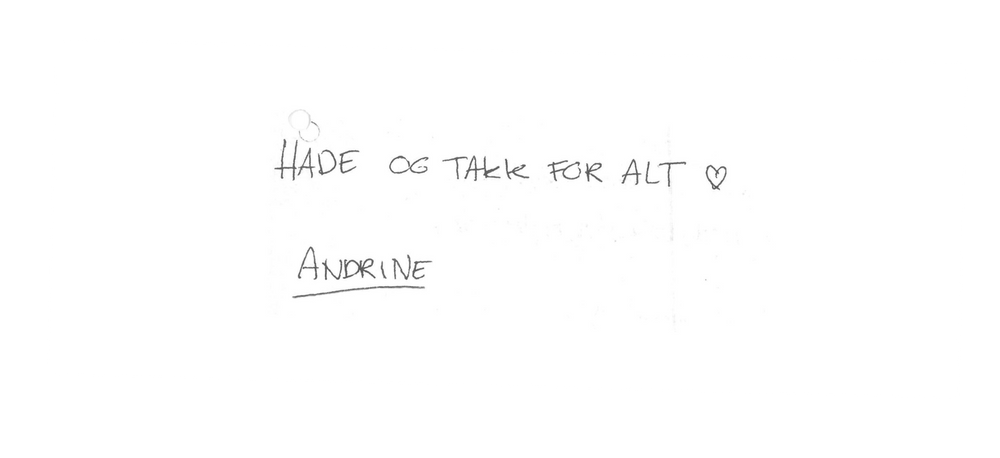
“Bye and thanks for everything”
Warning: these images contain graphic content that some viewers may find disturbing
The staff finds out where Andrine is hiding and tries to get her to talk. Finally she agrees to unlock the door.
Everything now looks as if it will sort itself out, but on the way down from the second floor, the staff suddenly hears a sharp thump from the room where Andrine is.
Then everything is quiet.
The staff runs upstairs again, but gets no response. The emergency centre is being contacted, while the staff tries to break in with a crowbar.
Just a few minutes later an ambulance is on site, and the girl is being brought out.
But for Andrine it is too late.
After four days in a respirator in hospital, she dies.
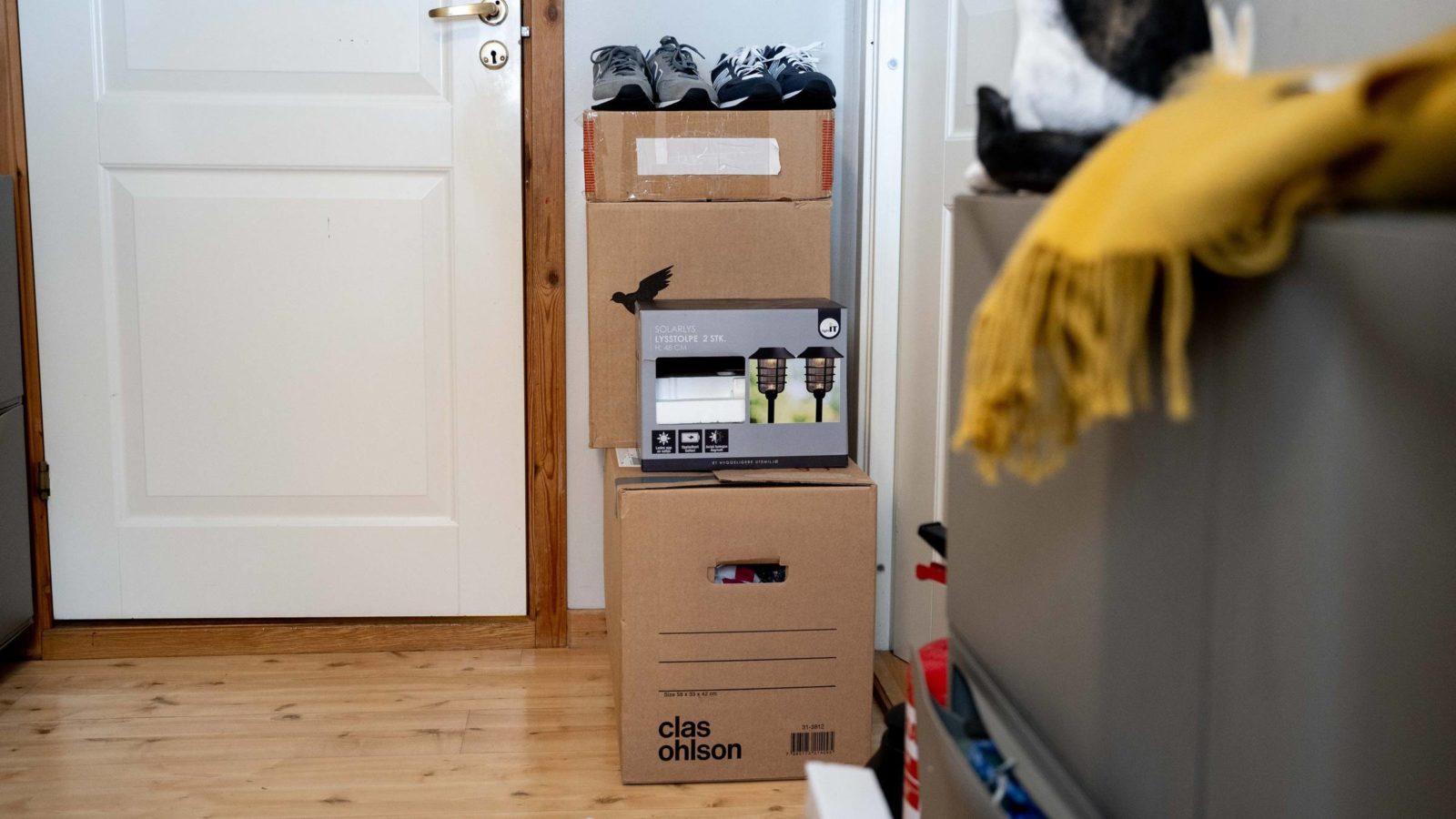
Photo: Patric da Silva Sæther
In the cardboard box
The cardboard box with Andrine’s things has been standing in the hallway for nearly two years. Her mother Heidi got it from the police just a few weeks after her daughter’s suicide.
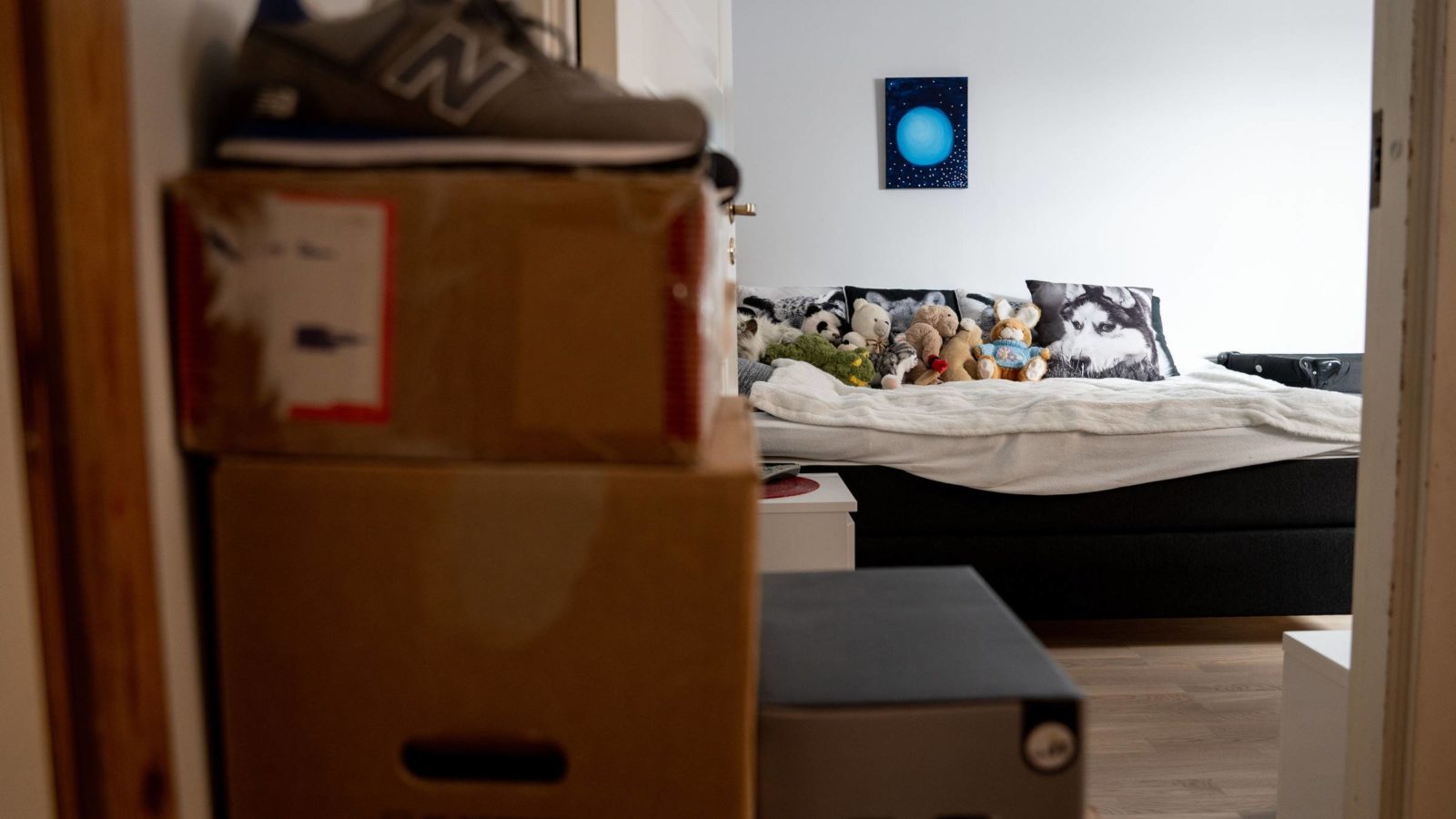
Photo: Patric da Silva Sæther
After that, it has remained there, untouched but never forgotten. Almost every day she looks at it, but is too afraid to open it.
That’s because the mobile from that evening when Andrine died, is in the box.
Heidi is afraid there are things on it she actually does not have the strength to see.
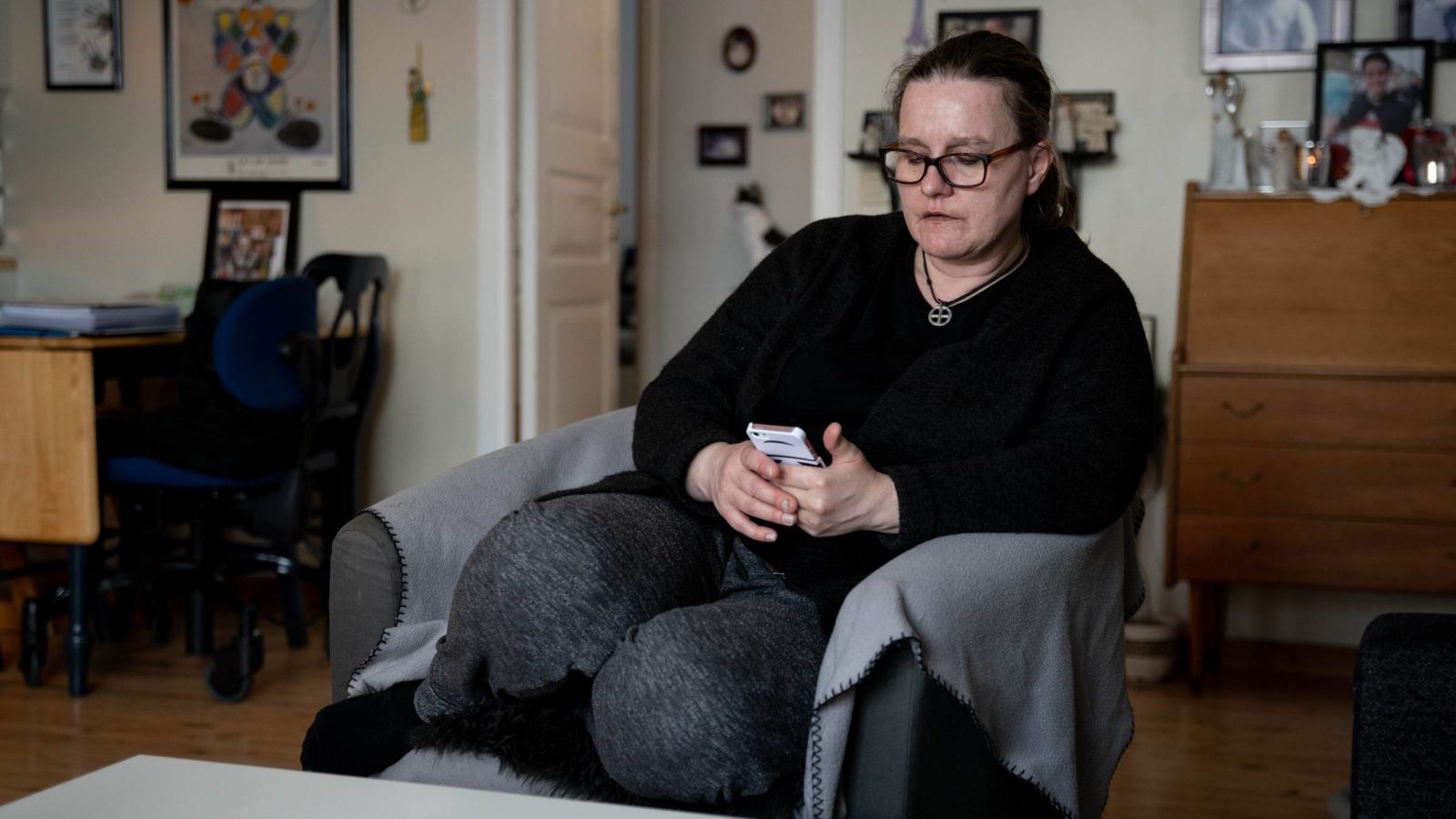
Photo: Patric da Silva Sæther
After nearly two years she at last picks up the courage.
On the mobile there are two Instagram accounts: the normal one she followed herself, but also a completely unknown profile, “Sebrapiken.”
Photo: Patric da Silva Sæther
She logs in and feels how nausea is building up.
There she finds a dark and frightening world, full of girls like Andrine.
The hidden network
Trigger warning: suicide, self-harm, eating disorders
On a hidden network with private and often anonymous profiles, hundreds of girls suffering from mental illness are meeting. In this secret place they give each other comfort and support, but they also share their darkest thoughts.
But even worse: they are posting pictures and films of serious eating disorders, deep wounds after self-harm, suicide thoughts, attempts and methods.
They often mark the accounts with “TW” or “Trigger Warning” to warn followers of content that may affect them in a bad way.
From Andrine’s mobile, NRK gets access to this secret room. Before she took her own life, she was one of the most active users in this enclosed environment. From her hidden Instagram account we find over 1,000 users posting depressive content of self-harm and suicide. Nearly 500 of the profiles are Norwegians. A mapping of this environment reveals that in just a few years, at least fifteen young girls have taken their own life.
– Immediately after the Easter break this year, a 22-year-old in Førde takes her life. Konstanse is also part of this world with several suicide attempts behind her. Before she dies, she deletes all her profiles on social media.
– Just a few days before, another suicide takes place. Cecilie can fill a whole room with her heart, but only fills a small corner of the sofa, her friends say about her. She is morbidly emaciated and is self-harming. The 20-year-old tries to take her own life several times and goes in and out of psychiatric treatment. On the eve of Easter 2019, she kills herself in Larvik.
– Leila Mariell from Vadsø has, for a long time, struggled with psychiatric problems and self-harm. She has been admitted on a number of occasions and has tried to kill herself several times. On Instagram and Twitter she has a lot of contact with others who also have difficulties. She finds a lot of support in this environment, but can also see that they can make each other more ill. By her followers she is seen as one who helps and support others, but she could not help herself. The 24-year-old dies in February 2019.
– In Østfold, a 17-year-old girl is together with another girl from the Instagram-group when she takes her own life in May 2018.
– Tine has several hidden profiles and is open about the environment she’s part of. She thinks it is about supporting and helping each other and can perhaps not see how damaging it can be for her and others. The 34-year- old struggles heavily with mental disorder, has an eating disorder and is self-harming. Tine takes her own life in October 2017.
– Merete’s great hobby is to sew and knit. She is training to be a child carer, but suffers mentally and has been in and out of institutions for many years. Finally this Haugesund girl plans her own funeral. In a final letter to her family she writes what is to be inscribed on her grave stone: Faith, hope and love. Merete dies in September 2017 at the age of twenty-nine.
– “Dear Mum, I’m writing to say goodbye. Love you so much. We will meet again.” This farewell letter lies in a flat belonging to a 19-year-old girl in Bergen. She has just moved into her own flat, but suffers mentally and injures herself. Her wish to die has been there a long time. She takes her own life in November 2016.
– In Rogaland, a 16-year-old girl is admitted for psychiatric treatment. She suffers from eating disorders and serious self-harm. She takes her own life in August 2016.
– Anette is only fifteen. The girl from Brønnøysund has just gotten a summer job and wants to buy a motorbike with the money. In a few weeks she is about to start an electronics course at college. She kills herself in July 2016.
– In March 2016 Karoline from Bergen dies. The 20-year-old shared many difficult thoughts and wishes to take her life in the network on Instagram.
– In February 2016 another girl from Bergen takes her own life. Camilla was only eighteen years old. “Rest in peace, little friend,” the family writes in the obituary.
– In the same month Marthe, who was also a part of the network, dies. She was bullied, injured herself and tried to take her own life several times. Marthe was only sixteen.
– “Karianne got peace at last,” says an obituary from 2014. She was depressed and did self-harm, but did not share her darkest thoughts with her near ones or in treatment. Within the network she had close friends, but was only fifteen years old when she died. Karianne took her own life in Stavanger after having given the followers a warning on Instagram about her plans.
– Eline dies in Bærum summer 2012, twenty-two years old. Before her suicide she struggled for a long time with self-harm and depression. She was active on several blogs before she took her own life.
They’re from all over the country and did not usually know each other outside the network.
They suffered from eating disorders or self-harm.
Half of them were below the age of twenty when they died.
Within the network, NRK has seen concrete examples on how methods for self-harm or attempts of suicide have spread from one member of the group to another. The worse an entry from a girl is, the more attention and care they receive from others.
Andrine
At only five years old, Andrine is bouncing around in her sister’s gym-suit and two years later she turns up, proud and a bit nervous, to her first training session. Throughout her childhood and youth at school, gymnastics is something she really loves, also as an instructor to the younger children.
Andrine grows up just outside the centre of Tromsø together with her mother and nine year older sister. “She had a normal childhood with much care and love,” says the mother.
At school she fulfils her duties and does well in most subjects. She has a winning way and lots of friends. She is a ray of sunshine with so much humour and high spirits that she is missed whenever she is away for just one day.
– “Andrine was very easy to like. We joked a lot together, even after she became ill. We could say one word wrong, look at each other and then burst out laughing,” says Heidi.
Andrine paints and draws and likes to potter around the house and her room. She has her own style, a bit playful and a bit boyish. When she puts on make-up, it is always soft and discreet. Andrine knows what she is doing.
Outward she appears tough and comfortable, but without anybody knowing it, she has serious psychological problems.
In February 2017, Andrine posts an old picture of herself. It is from a holiday with palm trees and flowers in the background. Andrine is smiling to the camera, dressed in a singlet and shorts.
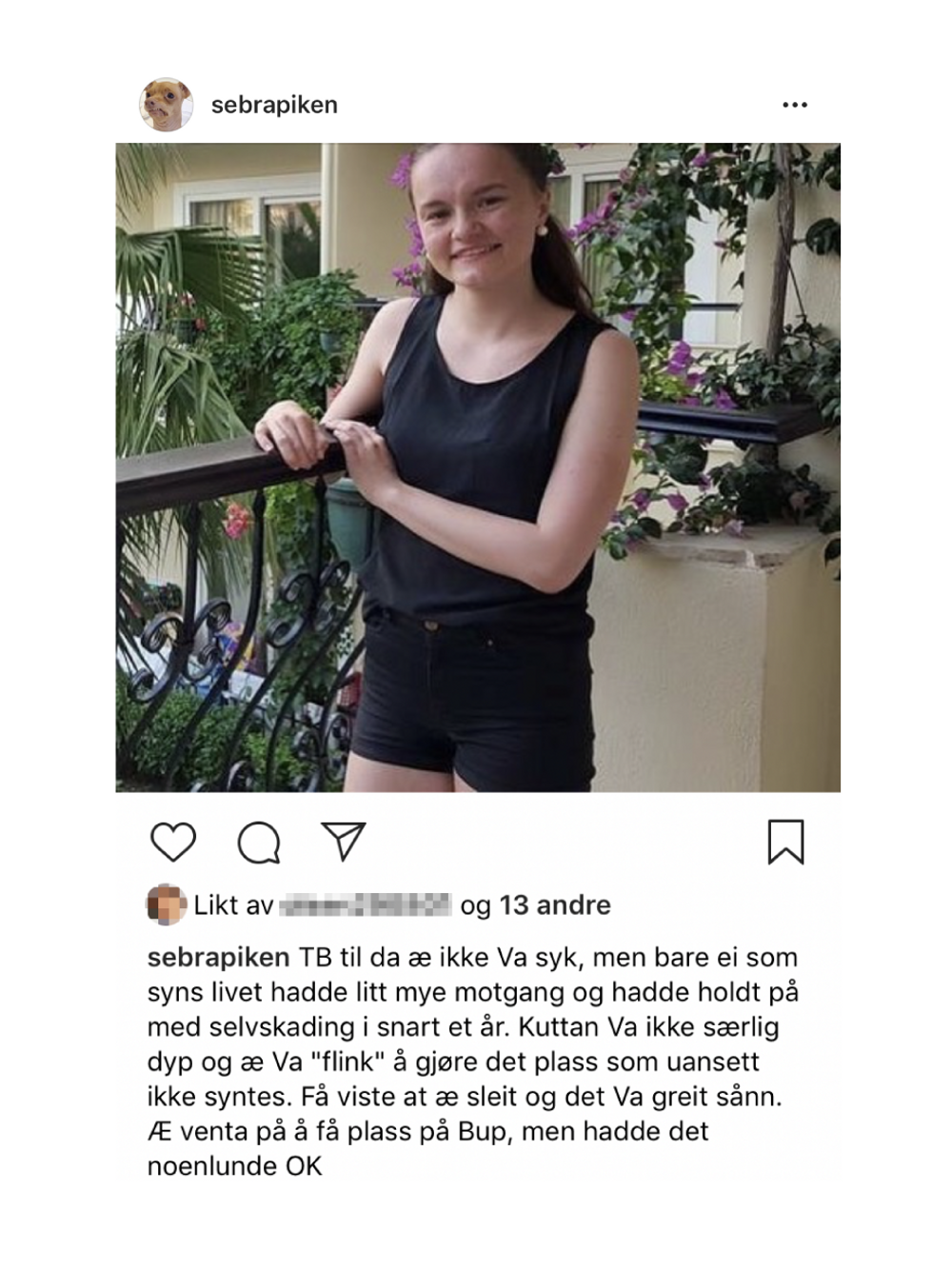
TB to when I wasn’t sick, but just one who felt life had a few downs but I had been self-harming for nearly a year. The cuts were not particularly deep but I was also «clever» at cutting myself in places that wasn’t showing. Very few knew how I was struggling and that was fine. I was waiting fora n appointment at Bup (Child and Youth Psychiatric Clinic/transl.), but otherwise I was fairly OK.
Soon, she begins to cover herself up, as her arms, under her clothes, were covered with scars and wounds.
Trigger warning: Self-harm
The first cuts
Andrine’s first meeting with self-harm was at school. She’s together with a friend when some older girls show their scars. She had never seen anything like it before and in her diary Andrine writes that this is “extremely stupid!”
At the same time there is something from this happening that sticks.
At fourteen, Andrine starts to cut herself. It happens after what she herself describes as a “heavy summer holiday.” Hidden from everybody, this self-harming takes place more and more often, while the cuts get deeper and more serious.
She herself describes self-harm as an “adrenalin kick.” A form of mastering that lets her handle evil and destructive thoughts: “It feels like being locked into a room where self-harm is the only emergency exit,” Andrine explains to a psychologist.
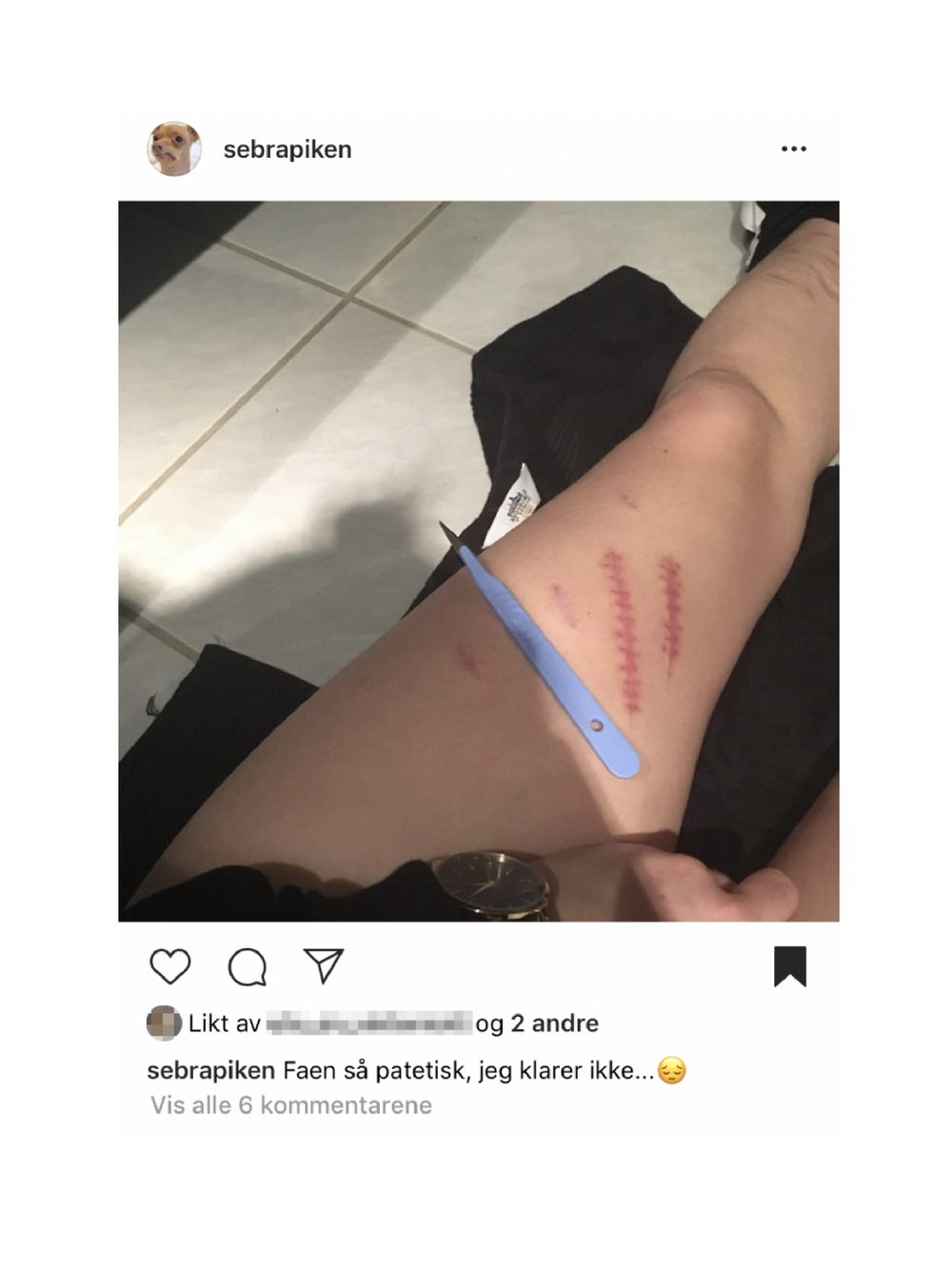
Warning: these images contain graphic content that some viewers may find disturbing
Trigger warning: suicide
The first suicide attempt
In August 2015, Andrine is admitted to hospital after a suicide attempt. The risk of suicide is not overwhelming, according to the doctors, but at the same time they warn of the danger of a repeat and the fact that the girl can “take her own life as an accident.”
After the suicide attempt, Andrine explains that she’s suffered of anxiety for many years. She never feels good enough and is convinced that nobody likes her. She also has great problems with controlling her feelings, especially when life goes against her.
Things that most people see as trivial can release endless sadness and crises. Self-harm and suicidal thoughts “can be seen in this context,” the report from the hospital says.
There is also another reason why she hurts herself. Andrine reveals this several months later.
The dangerous voice
Andrine is hearing a voice in her head. It suddenly appears and orders her to take her own life.
Together with “The Voice” there is also a small girl. Andrine calls her “Dagny.” A drawing in her diary shows a character that looks like she’s been taken from a horror movie. The eyes are pierced out and the mouth sewn together with thick stiches. “The Voice” has done this, and if Andrine doesn’t do as “The Voice” commands, the same thing will happen to her.
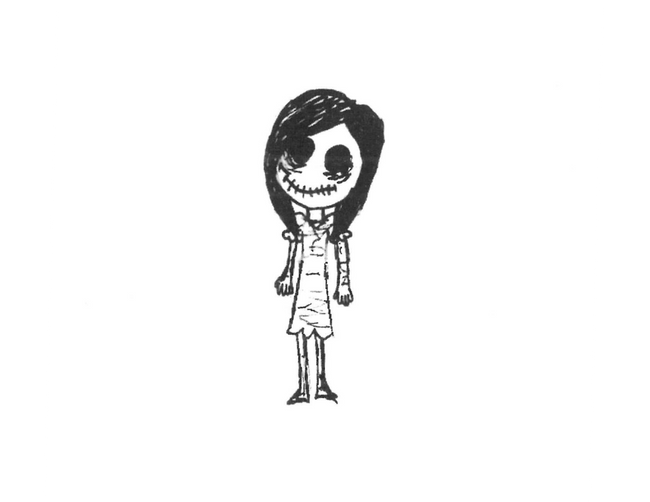
In order to ignore “The Voice,” Andrine has to suffer pain, she explains, either by cutting herself or swallowing dangerous objects.
Andrine is now being treated at the hospital, first in conversation therapy and later by medication. After a while she is seen as being well enough to be discharged, but Andrine does not want to go home.
The relationship with the family is very difficult, she feels. Andrine is now so sick that she requires more frequent follow ups than her mother can give her. Contact with her father was broken when she was ten years old, and Andrine feels she’s only a burden that nobody cares about.
She’s kept in hospital. And while her contact with the real world is shrinking, her life on Instagram takes increasingly more time and space.
The hidden account
She calls herself “Sebrapiken.” Probably from a book with the same name about a girl who also injures herself.
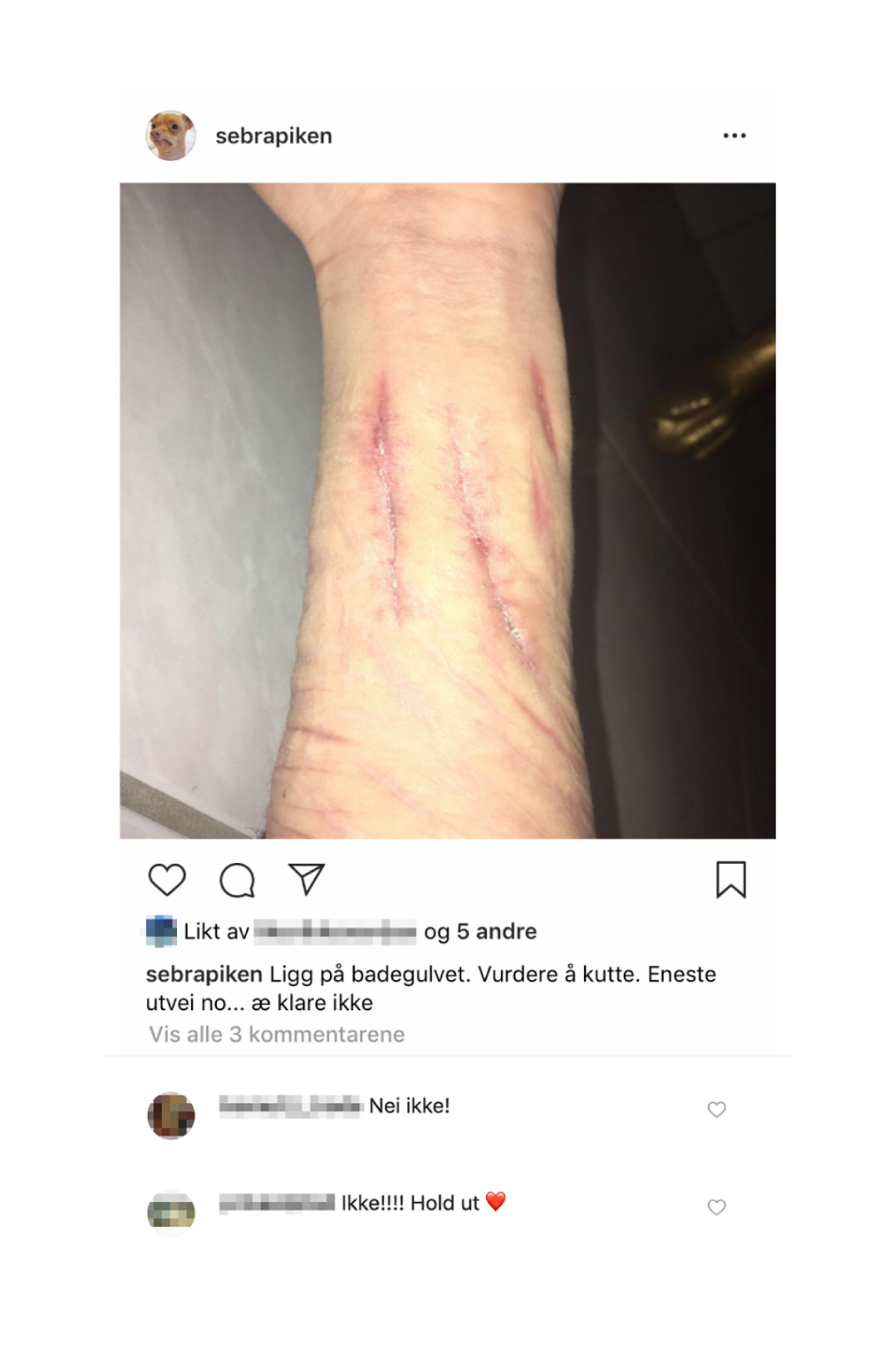
Lying on the bathroom floor, thinking of cutting. The only way out now….I can’t do it
Comment: No don’t!
Comment: Don’t!!!! Hold on (heart)
Warning: these images contain graphic content that some viewers may find disturbing
Just like Andrine, many of the girls on the hidden network seem to be completely normal girls from all over the country. Often very young, some as young as fourteen years old. They often don’t know each other in real life, only online.
The girls use their own “tribe language” with codes for diagnoses, what type of self-harm they’re into, how many times they have been admitted to a hospital or tried to take their own life.
In this, Andrine at last finds a place where she doesn’t feel alone. Here she gets support and understanding from others who suffer the same and who understand her situation.
But most of all, she has found a fellowship where sick girls are exchanging negative thoughts and experiences. In a world without adults, they share tips and advice on self-harm and suicide.
Andrine quickly becomes a person that most people know of in this secret environment.
Being transferred to child care
During the next months, Andrine is more or less continuously admitted to several different institutions.
In several places it seems like things are going well, at least in the beginning. The girl seems positive and happy, she follows her treatment and often shows signs of improvement.
Then come the downturns, abruptly and worse. Self-harming gets more frequent and takes new forms. Andrine starts to swallow harmful objects and the cuts find new spots on her body.
In February 2016, Andrine’s condition has deteriorated so seriously that she’s transferred to child protection, and in May she moves into a private institution called “Jentespranget.”
Here she remains during the last months of her young life.
A new beginning
Jentespranget is situated at Stord, between Haugesund and Bergen. It is a department for seriously-ill girls. Some of whom are often under around- the-clock supervision.
Andrine gets her own room with two staff members looking after just her.
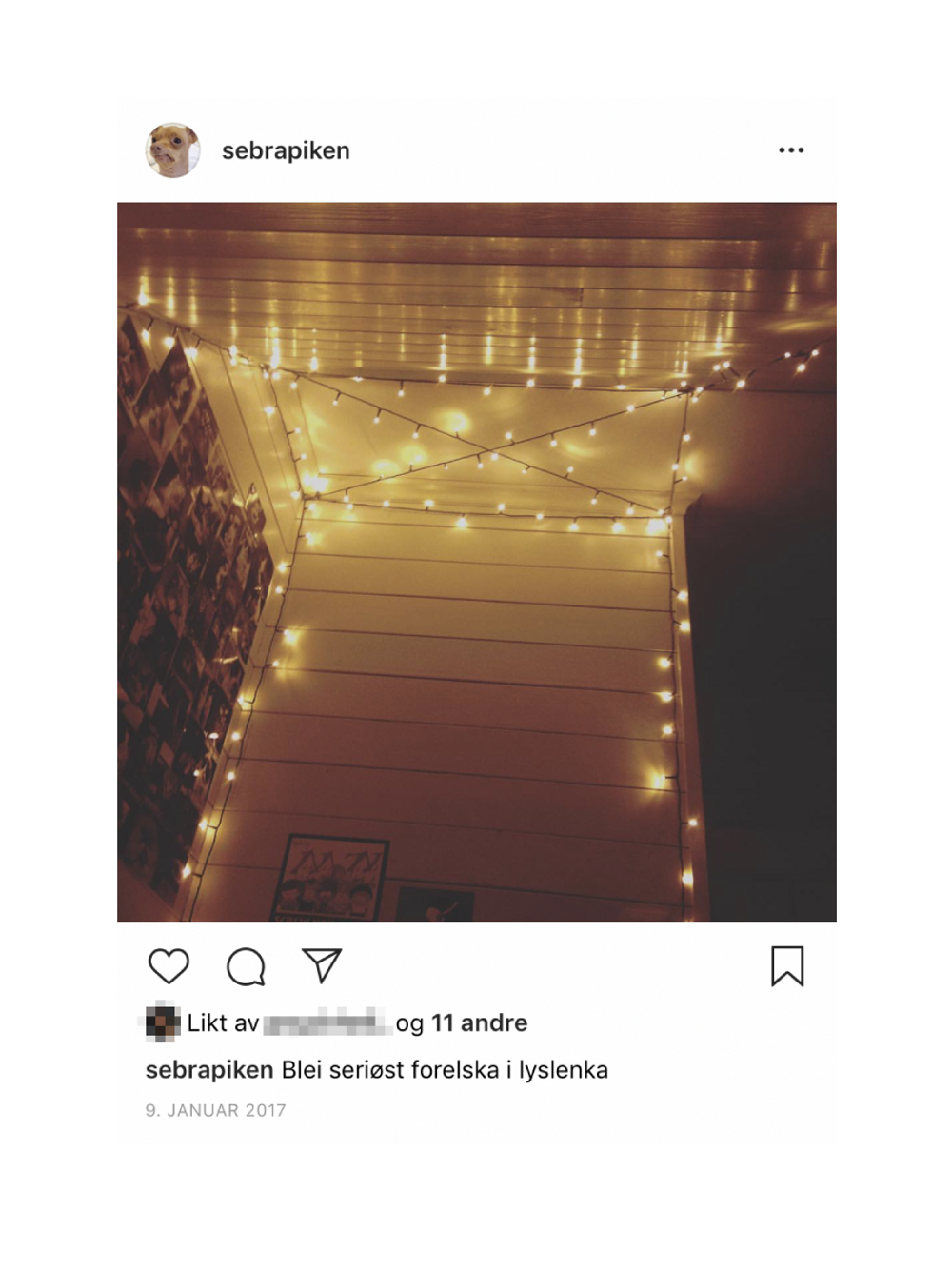
She’s given a new treatment plan and sees a psychologist regularly. Gradually, she begins to think of her future and attends school when she is capable. To keep her thoughts away from evil, the days are filled with activities. Andrine is to be taught to take responsibility for her own life and has to wash her clothes and keep the house in order.
She starts working out, and as a part of her treatment Andrine begins horse therapy.
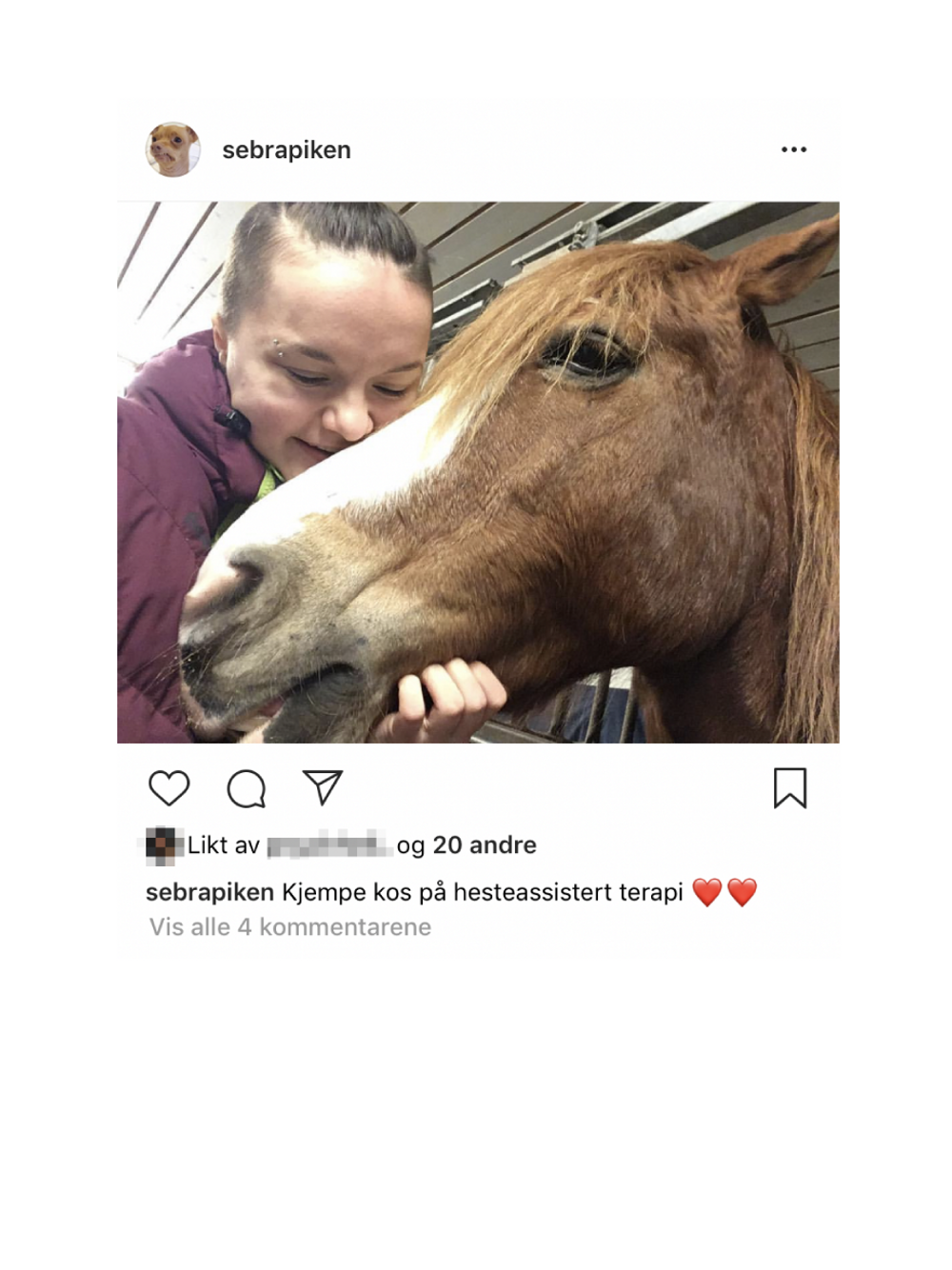
But during the summer she suddenly falls into extended, heavy depressive periods. Her thoughts on self-harm and suicide increase, especially in the evenings, according to staff.
Andrine has access to both her phone and the internet, also at night. In two months she posts over 1,500 entries. She posts private messages several times a day and much of those are images of self-harm and thoughts on taking her own life.
At Jentespranget they notice that she’s very active on the Internet. In a risk assessment the employees write:
“Andrine has on several occasions informed that she wishes to take her own life. She has also written suicidal thoughts on social media, on a closed Instagram profile.”
During her stay Andrine attends several meetings on how damaging this environment can be for her, but she takes no notice.
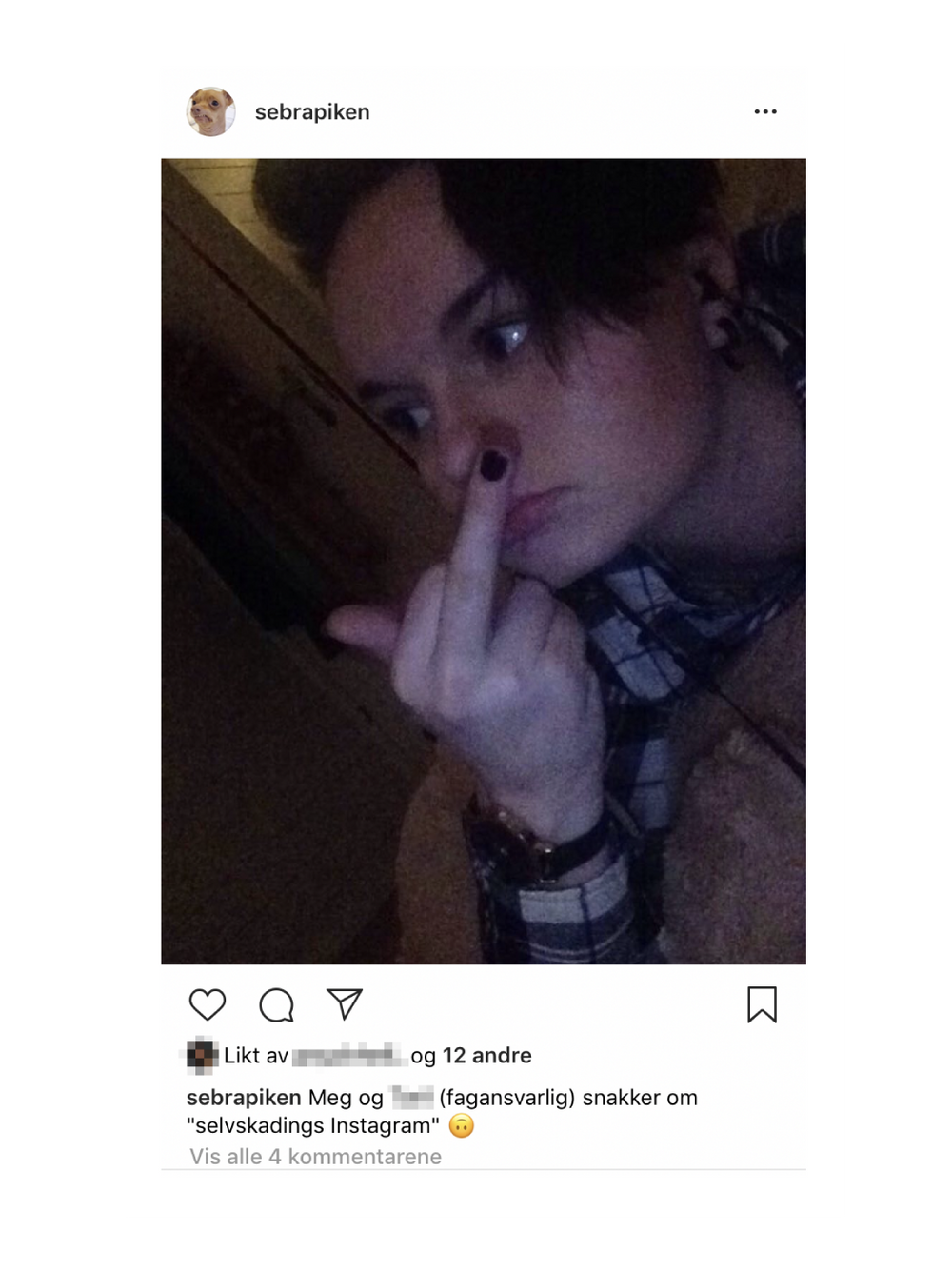
I and people in charge talk about “self-harming Instagram” (smiling face upside down)
Warning: these images contain graphic content that some viewers may find disturbing
The staff has no right to take the mobile away from her, but when they suggest banning it for a period, Andrine uses self-harm as blackmail to keep it.
As Andrine is voluntarily admitted to the institution, the staff has only limited authority to use force against her.
You snitch, you die
As Sebrapiken, Andrine is “safe.” Many users also mark their profiles like this. In this group “safe” means to follow an unwritten rule that nothing from within the network is to be shown or told to outsiders. There’s a rule of silence, and it’s simple: “You snitch, you die!” If you don’t keep quiet, you can be blocked or closed down by others. Some say this rule is valid even when there’s a question of life-or-death for the girls.
But Andrine does not want to follow this rule when somebody is trying to take their own life. Once she called an institution in northern Norway to tell their staff that one of the girls living there was about to commit suicide.
Contagious behaviour
In August 2016, Andrine experiences online that a close friend from within the Instagram network kills herself. She takes this very hard and is clearly affected by her death. The two following months she is admitted six times after overdoses and other suicide attempts. During this period she has to get nearly 200 stitches.
And so, she is sent to hospital in Bergen. She has suffered severe internal injuries after swallowing dangerous objects and must be operated upon. After surgery, a new suicide attempt happens at the hospital, and Andrine is only a whisker from death.
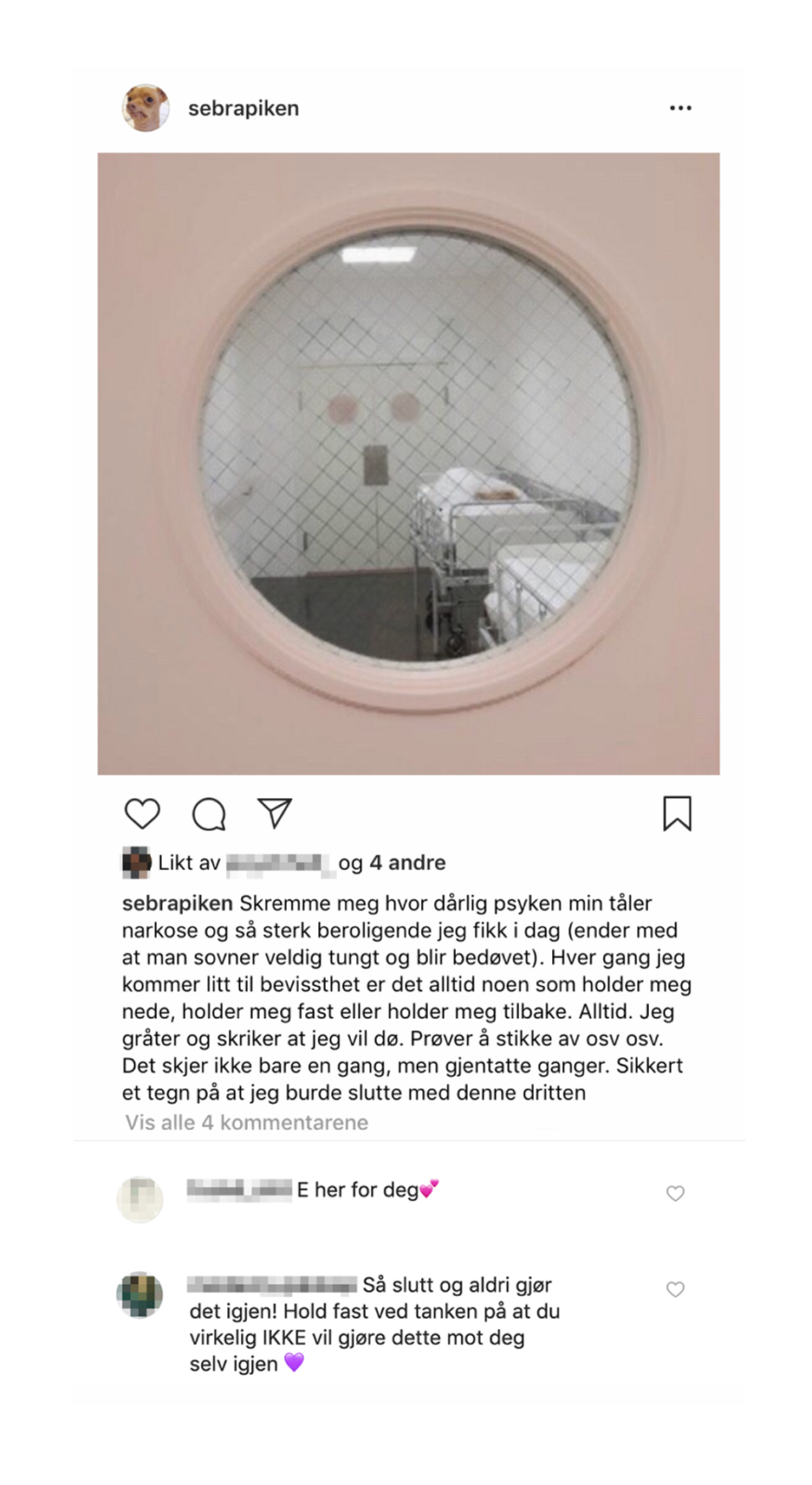
It frightens me how bad my psyche takes anaesthetics and how peaceful I became today (ended with me sleeping very heavily or being anaesthetised). Every time I become conscious there is always someone holding me down, keeps me tied or holds me back. Always. I cry and shout I want to die. Try to run away etc. It does not happen once, but repeatedly. Perhaps a sure sign I should end this shit.
Comment: I am here for you (hearts)
Comment: So stop it, and never do it again! Hang on to the thought that you really DO NOT want to do this to yourself again (small heart).
Warning: these images contain graphic content that some viewers may find disturbing
Now Jentespranget asks for help. To the child protection agency in Tromsø they write: “We must, to the best of our ability, keep this girl alive,” but this is difficult with the framework they now have. For a period they employ extra staff to cover Andrine.
The fear of turning eighteen
Andrine is now only weeks from turning eighteen. After years as a hot potato in the system, in and out of psychiatric institutions, in and out of meetings on who shall take care of her, this is something she fears more than anything: having to take care of herself.
Already two years before Andrine dies, a previous entry in a hospital report says that she is especially vulnerable to major changes.
She needs security and stability, and we see that her self-harm increases as soon as discharge is being approached. She says she does not see many possibilities in the future, her thoughts regularly return to taking her own life.
At the beginning of 2017, Andrine is, despite her situation, given the decision that she is not guaranteed a place at the institution Jentespranget when she turns eighteen. This really frightens Andrine, now that she finally has arrived at a place that she really likes.
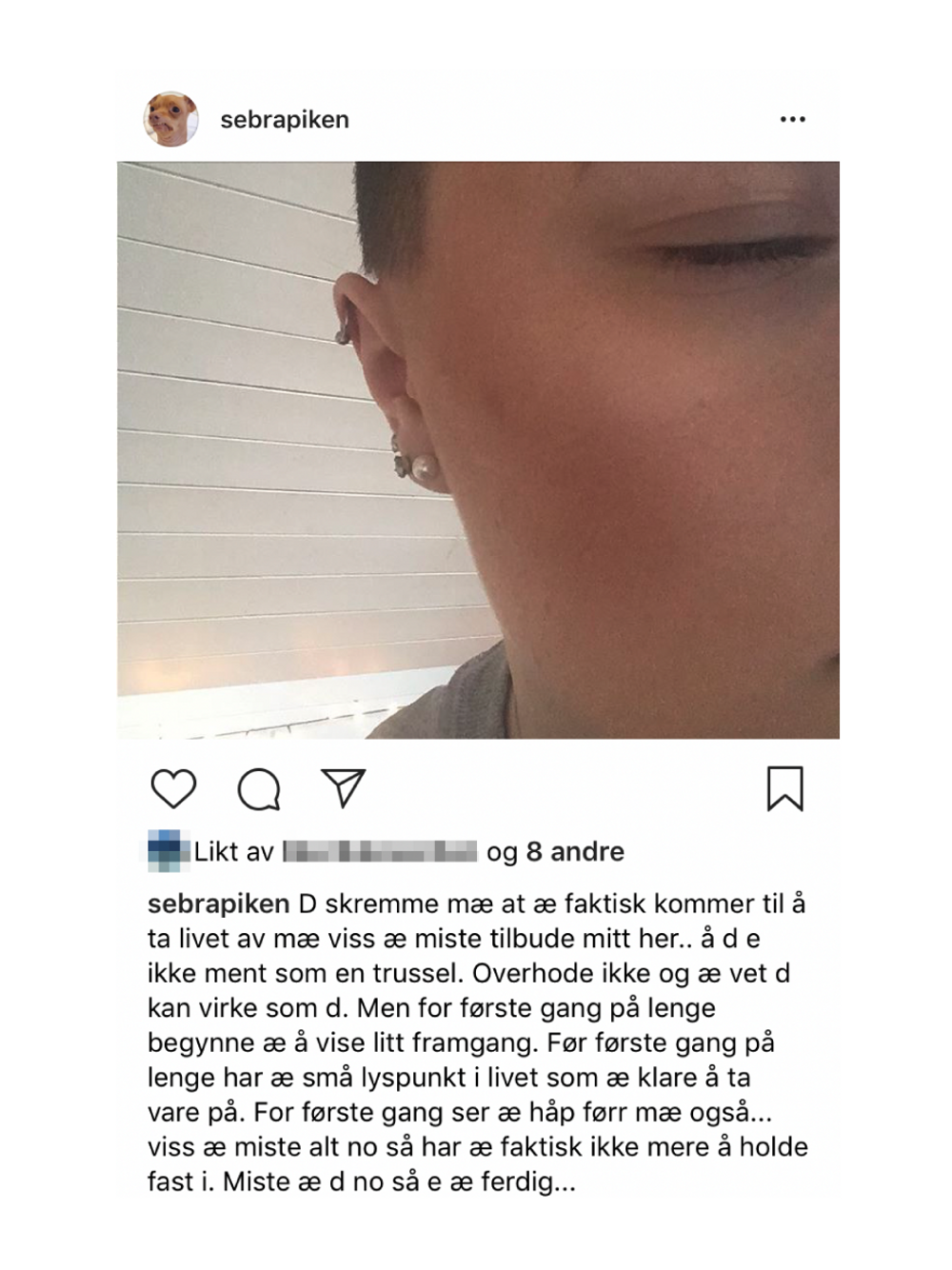
It frightens me that I actually will kill myself if I miss the offer of a place here. This is not meant as a threat, although I know it can sound like that. But for the first time in ages I begin to show some progress. For the first time I have small rays of light in my life that I love. For the first time I see a bit of hope for myself as well…..if I lose everything now I really have nothing more to hold on to. If I miss it now I am finished…
Warning: these images contain graphic content that some viewers may find disturbing
Andrine desperately wants a quick decision. She and her mother are attending several meetings with the child protection agency without reaching a final decision. During so-called cooperative meetings about Andrine, nobody can give the girl a clear answer.
The last day
In the morning on the day Andrine dies, the staff perceives her as being very “heavy.” Already before breakfast there’s a text from Andrine saying she’s not feeling good. She feels completely “rock bottom.”
The staff is united in keeping a certain distance. Experience shows that the closer they are to her in these situations, the greater the risk of her hurting herself.
Andrine starts the day in the stables, and after having fed the horses she seems better. At dinner she jokes and plays around with the employees, and in the evening they all go to the cinema.
In the middle of the film the staff gets a call from one of the other girls in the house. She says that Andrine has plans to take her own life later that evening and that she has posted this on Instagram.
Since Andrine seems stable and at ease, their joint decision is to bring it up when they get back home.
On the way from the cinema Andrine posts this image.
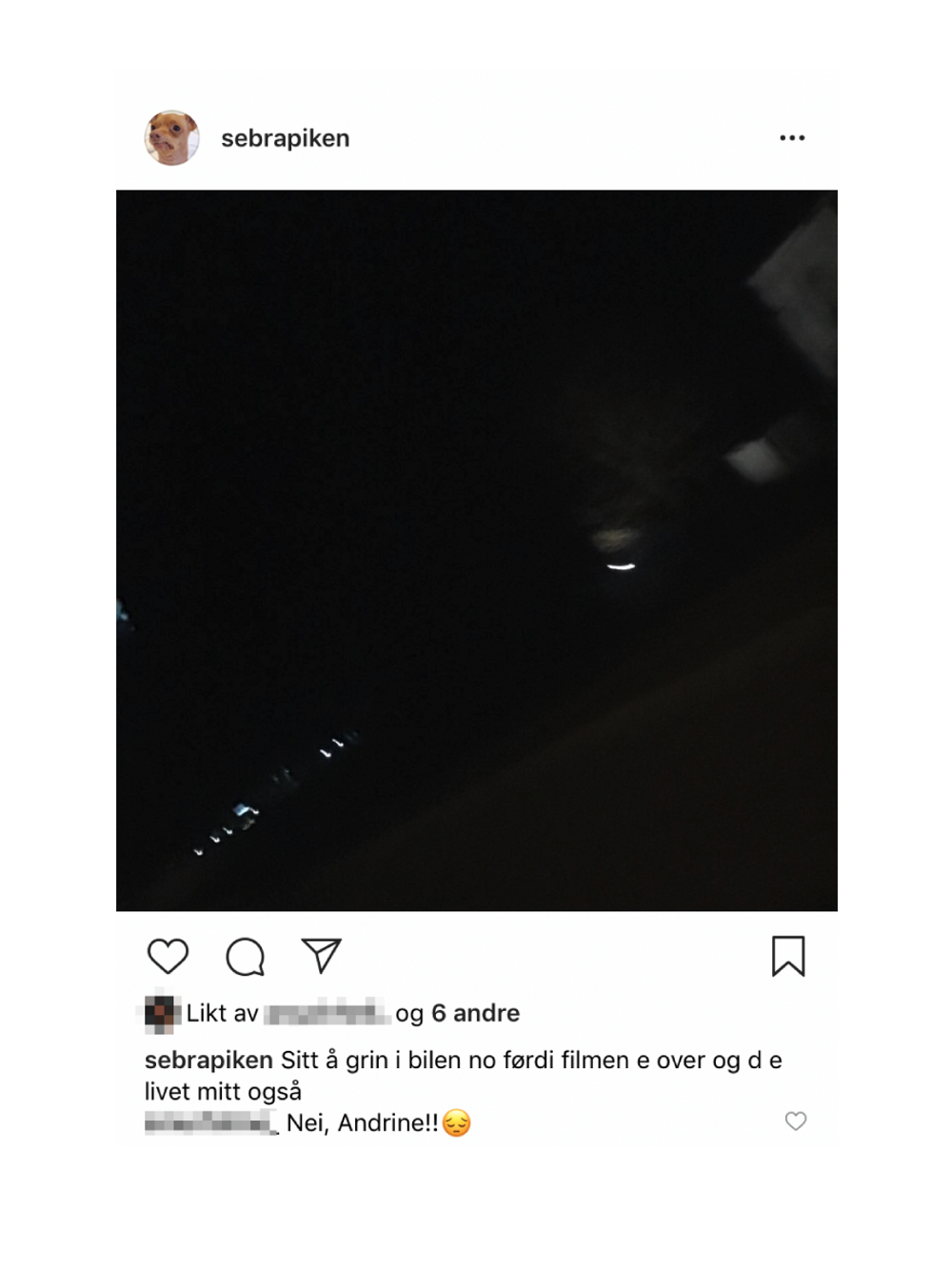
Sitting in the car smiling because the film has ended and so has my life.
Comment: No, Andrine!!! (sad face)
Warning: these images contain graphic content that some viewers may find disturbing
Back at the house Andrine runs upstairs to her room before anybody gets to talk to her. They can hear her cries and suggests a trip to the doctor, but Andrine refuses. She doesn’t want anybody to stop what she has planned.
A while later a text message arrives in which Andrine says thank you for everything. The search for her starts, but on the same evening Andrine’s life is over.
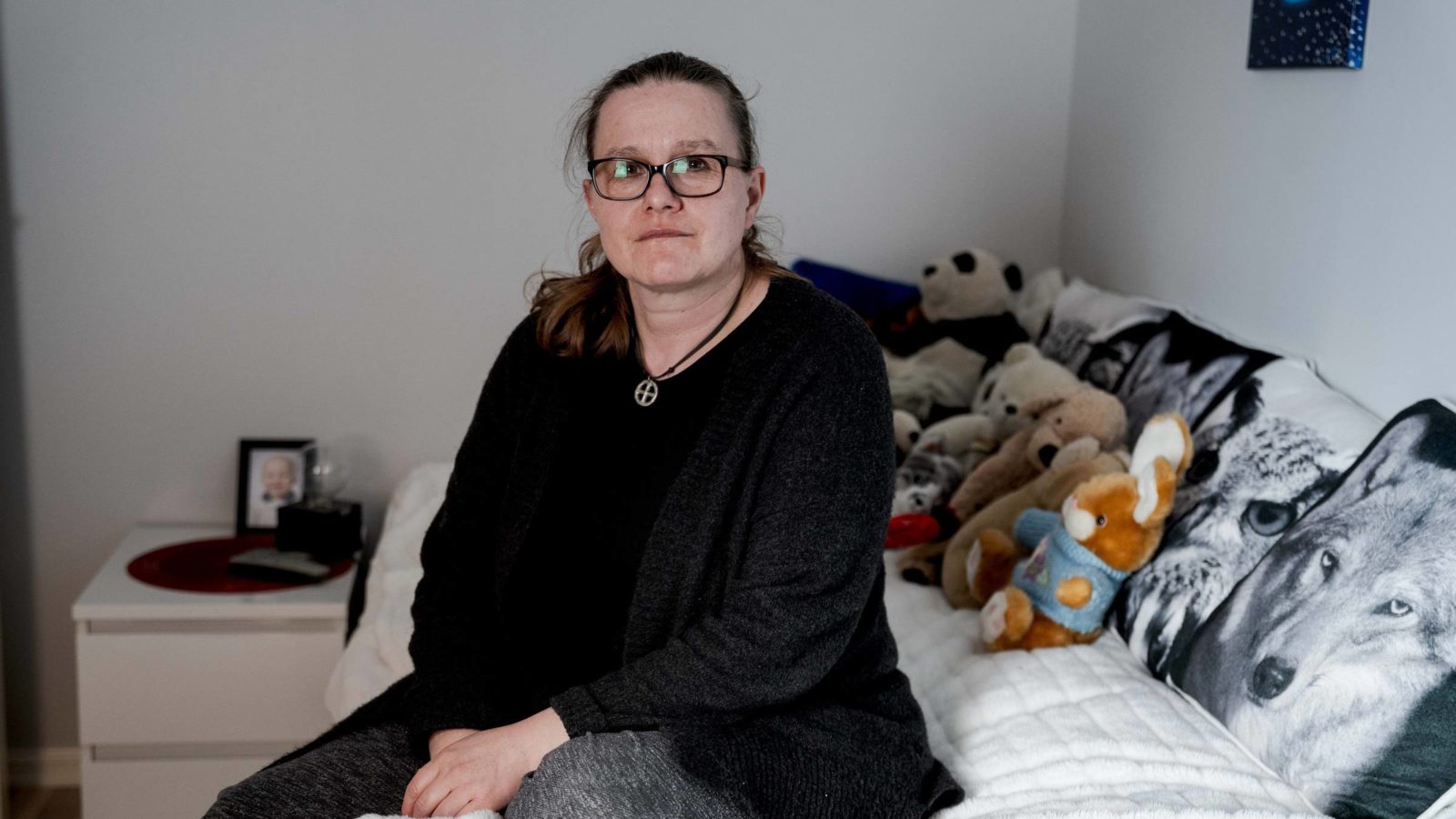
Photo: Patric da Silva Sæther
“Poor child of mine! Just to think how hurt she must have been and I did not manage to help!” says Andrine’s mother Heidi and puts her daughter’s mobile phone away.
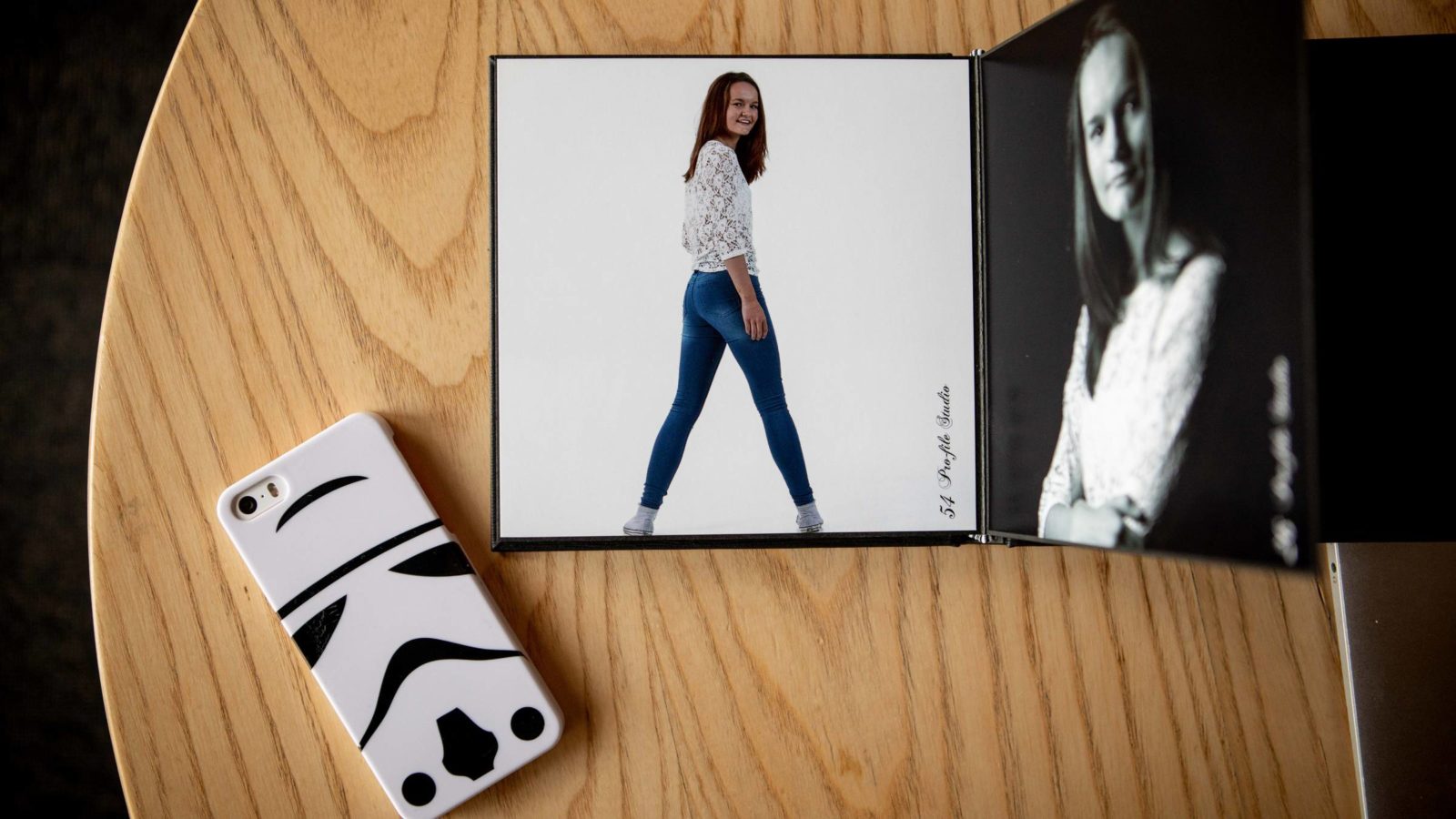
Photo: Patric da Silva Sæther
She wants Andrine’s story to be included and help to reveal this hidden network because it is a dangerous arena, she says.
– “This is completely without any filtration. Had Andrine not had this relationship with the Internet, I don’t believe it would have ended as catastrophically as it did.”
Just a few weeks after Andrine’s death, the child care agency formally cancels her place at Jentespranget. Ending date for her stay: the day Andrine would have turned eighteen.
An official report following Andrine’s suicide, states that the employees at Jentespranget did everything they could in the situation and that the follow-up of this girl was defendable.
Epilogue
The day after Andrine’s eighteenth birthday, Heidi finds an envelope in the letter box at home. It is a thank you letter from the director at Oslo University Hospital.
In the letter it says that Andrine’s organs, after she’d been disconnected from the respirator, have given new life.
– “When I came to the part about the children, I just burst into floods of tears. I had really hoped that she would save some children, so it was good to hear,” says Heidi and reads the last lines in the letter aloud:
Four adults and two children have been given a new life. I hope this can be a comfort for you and Andrine’s sister to think about. I wish you as good a future as possible and feel with you in your sorrow.
This story is based on Andrine’s profile and own notes, journals from the child and youth psychiatrists involved, the child care agency and other public documents connected to her treatment, plus interviews with Andrine’s mother and conversations with those closely involved with the fourteen other girls who have died. Their families have accepted the use of pictures and names of these girls.
Neither Jentespranget nor the child and youth psychiatrist treating Andrine are willing to be interviewed in regards to this matter.
The Children, Youth and Family Agency in Region North and its Area Director Mr Pål Christian Bergstrøm, writes to NRK:
“This is an extremely serious case. For us it is the worst thing that can happen – a child dies when under care of child protection. We feel empathy for the mother and other survivors. The employees working with Andrine are also experiencing great sorrow. It is very difficult to be informed that Andrine felt we did not do enough to help her. This case was, however, extremely involved and complex.
Legislation set for the purpose of securing children’s rights can in situations where the children are as ill as Andrine, limit the child care agencies’ ability to provide the assistance that children need. This case also highlights the demand aid organisations face when this form of social media is used.”
Trigger Warning
- Trigger Warning – TW – is a term used within some closed groups on Instagram. It is used to warn against strong pictures, or content, that can release evil thoughts and dangerous actions. Users insert this ex- pression in their biographies to warn others from entering their profiles
- For over a year, NRK has followed a network on Instagram where this expression is frequently used. Young girls, mostly teenagers, discuss suicide and self-harm and share images showing how they have injured themselves.
- In this period NRK had identified fifteen girls from the network who have taken their own lives. In one case this took place almost as a live stream on Instagram.
- This network is not well-known among professional health carers in Norway. There is also very little research performed in this area.
- In a series of articles NRK highlights this dark and hidden network.


